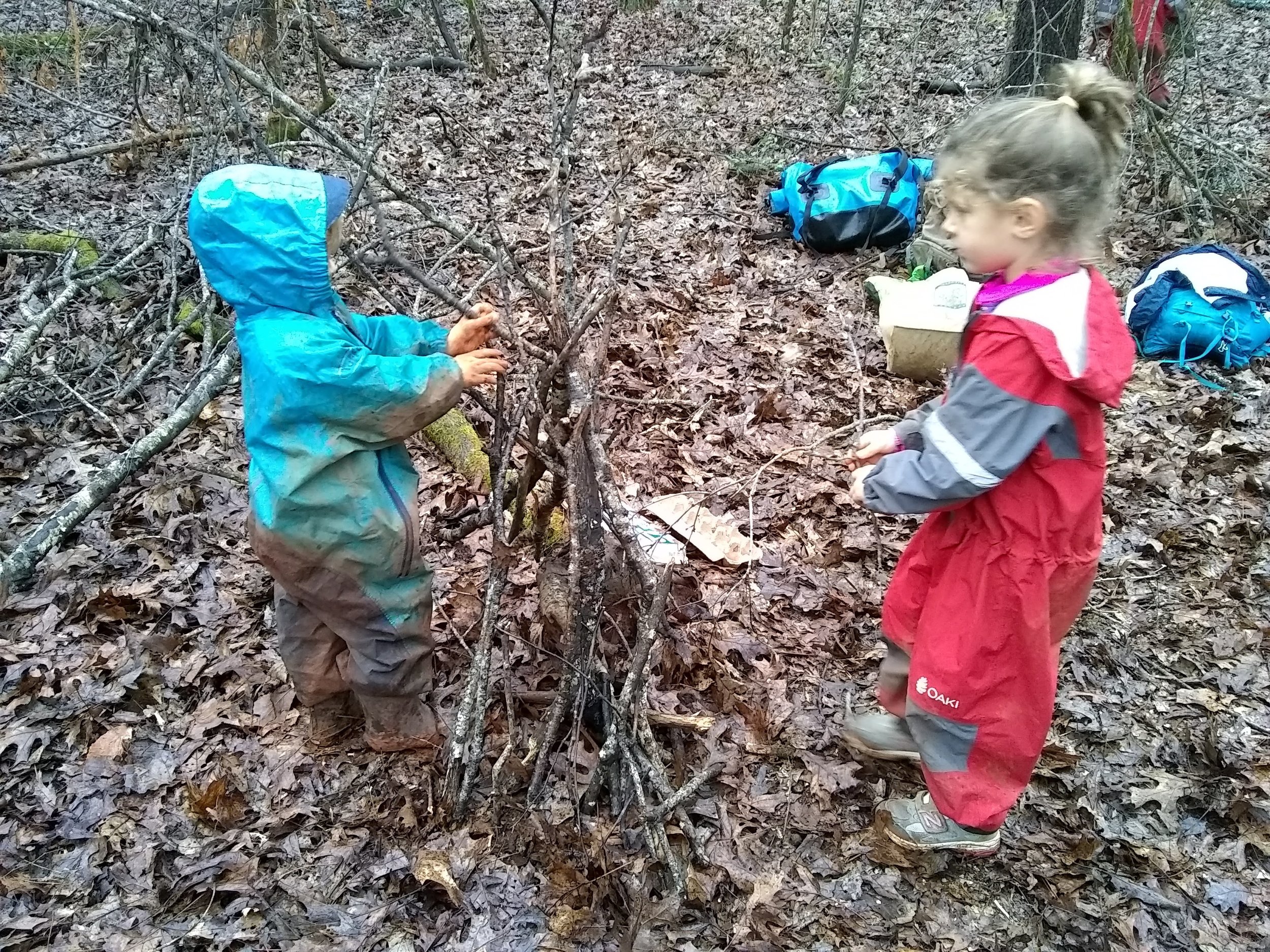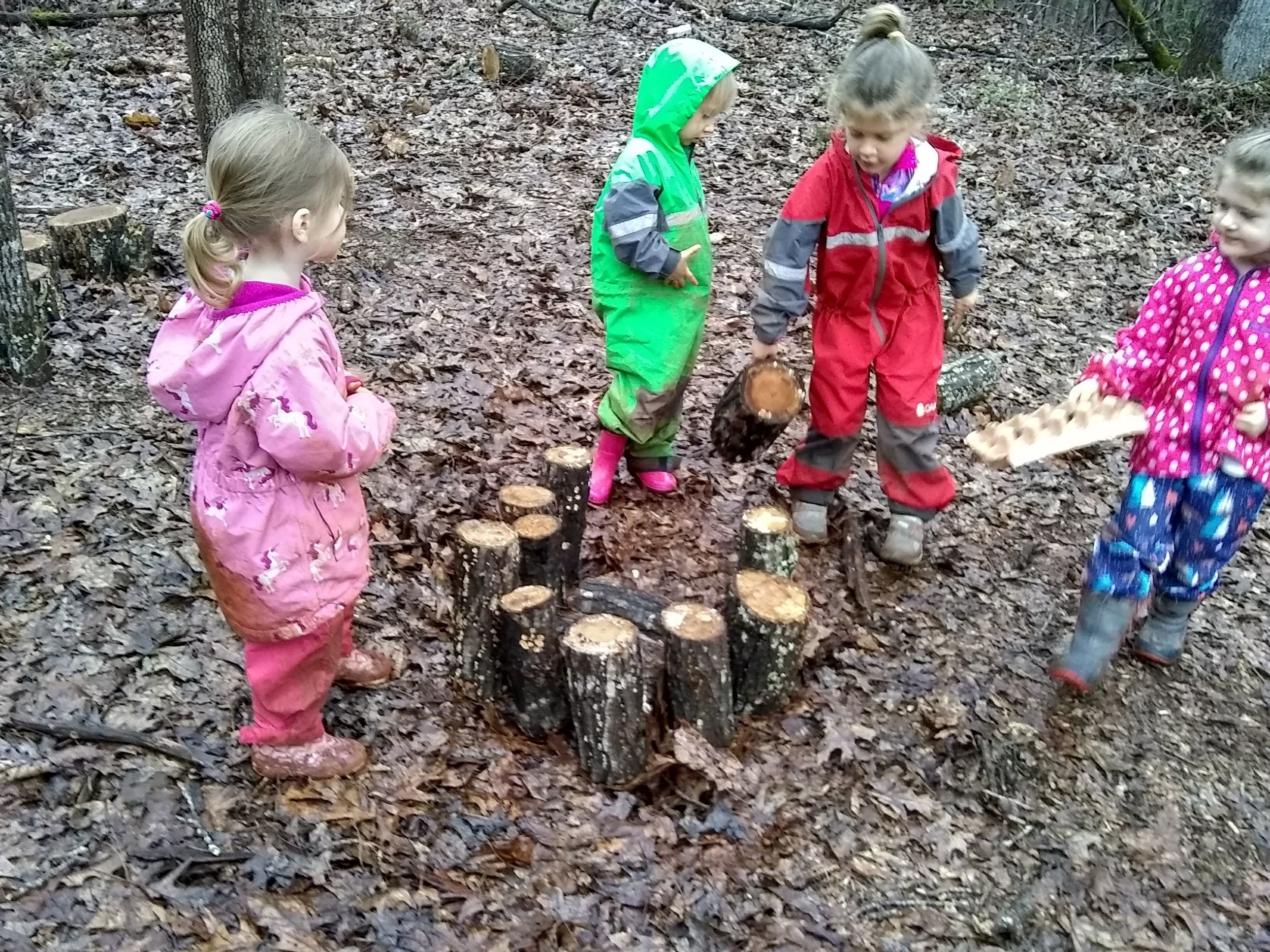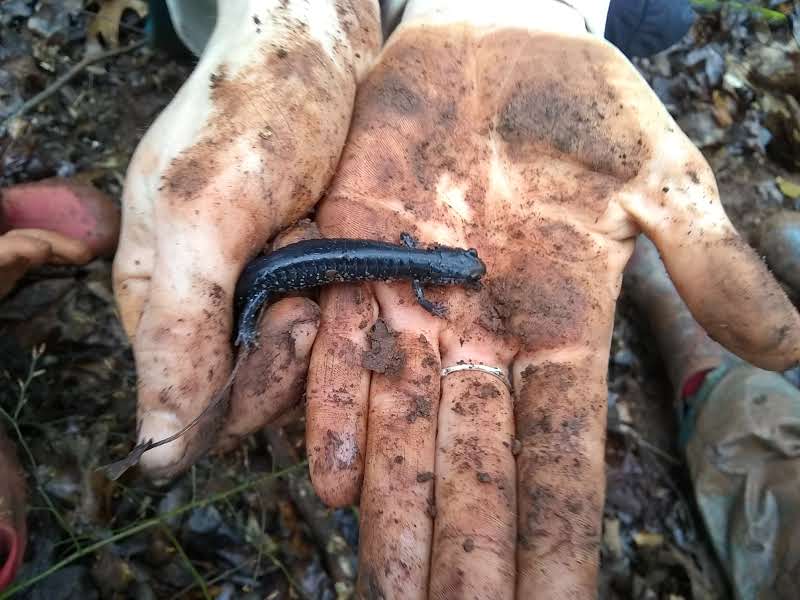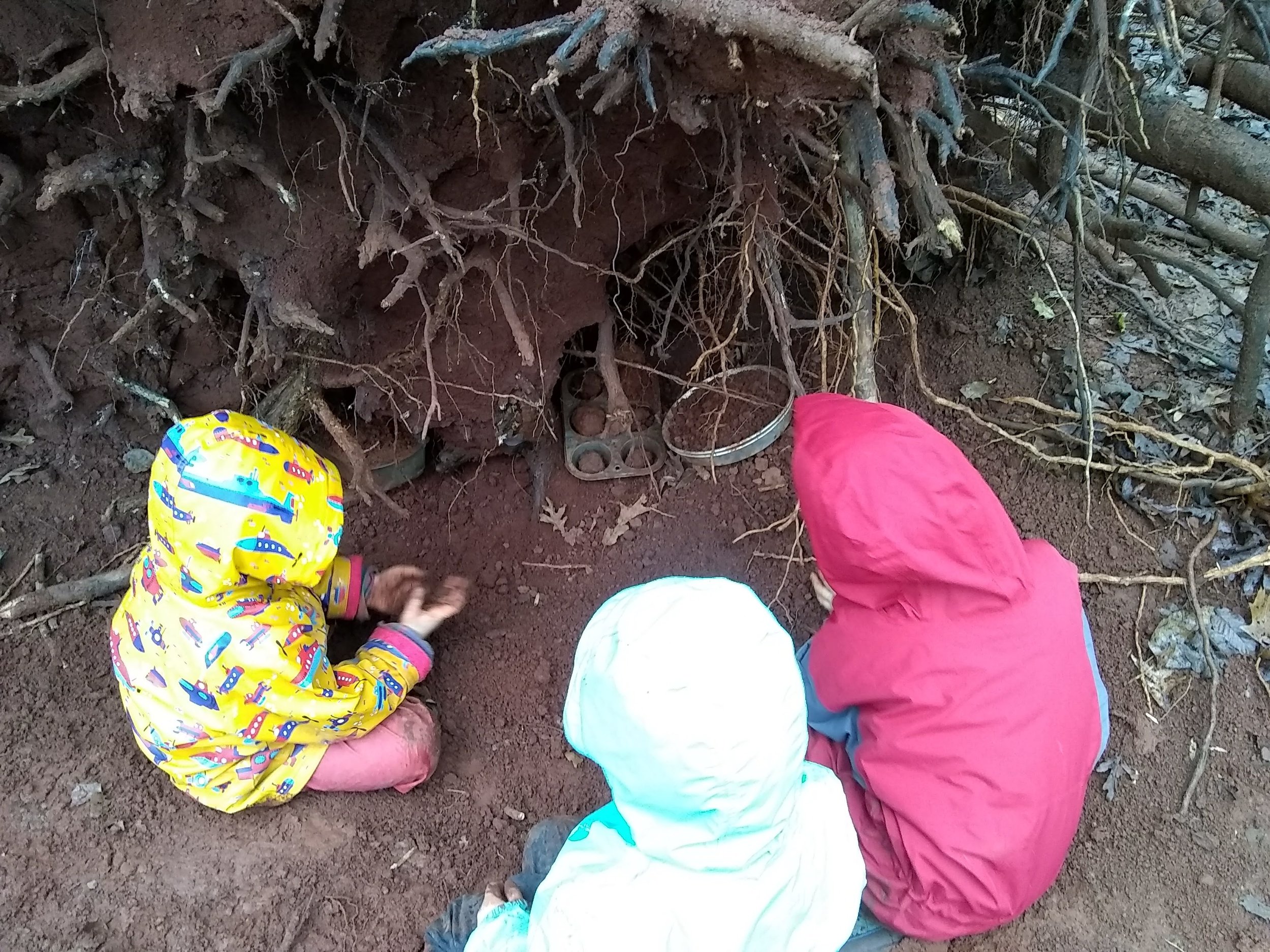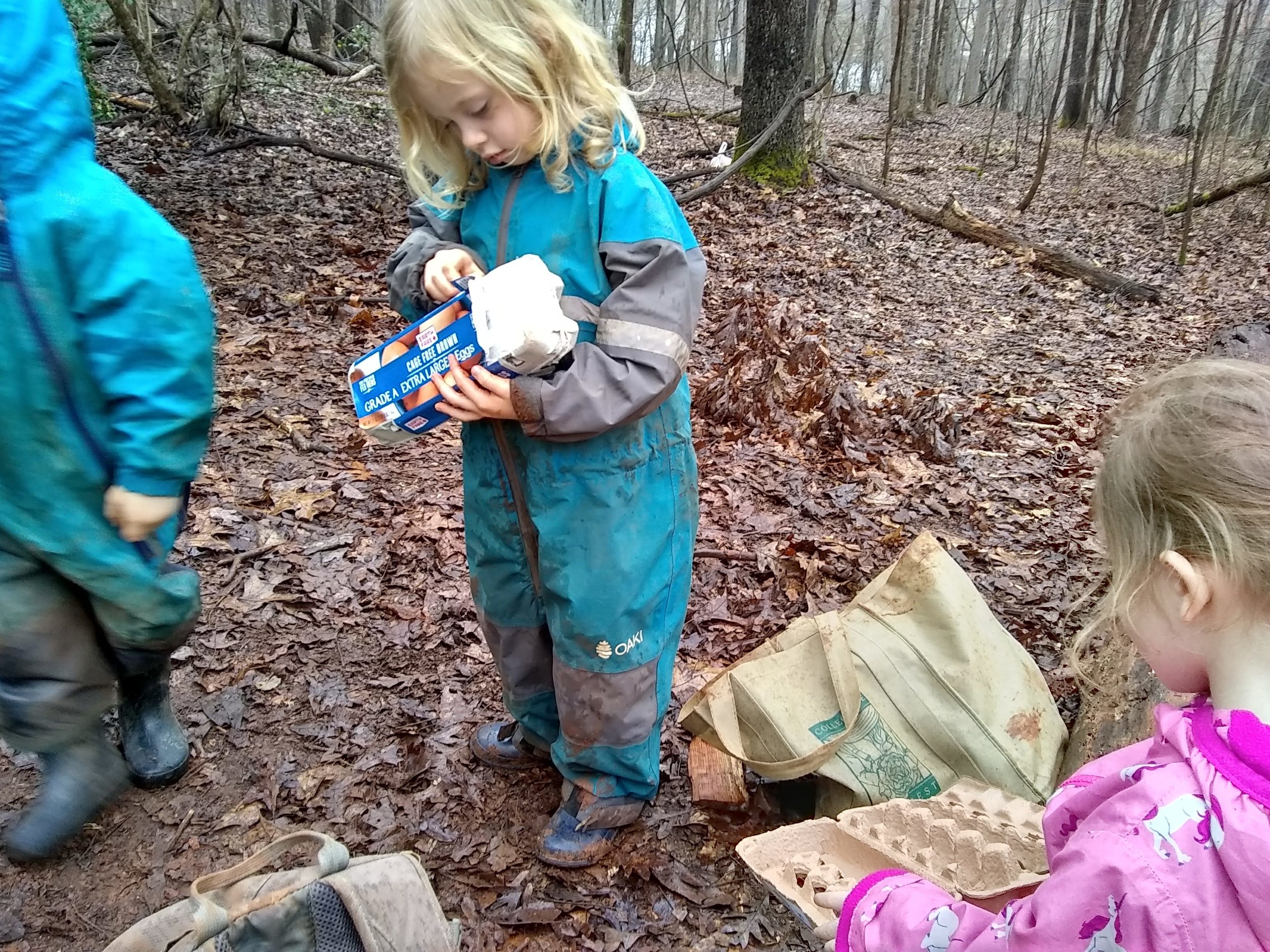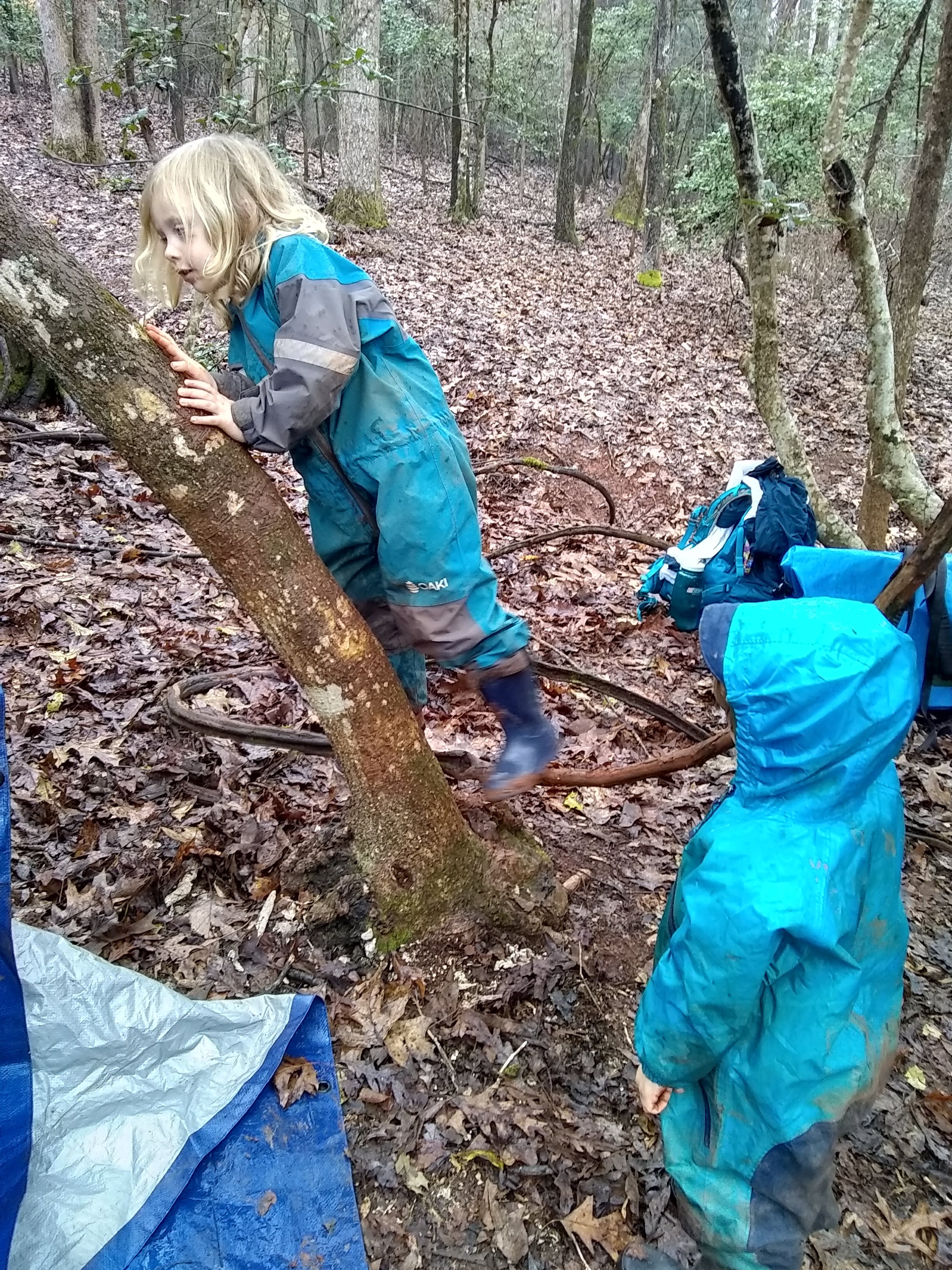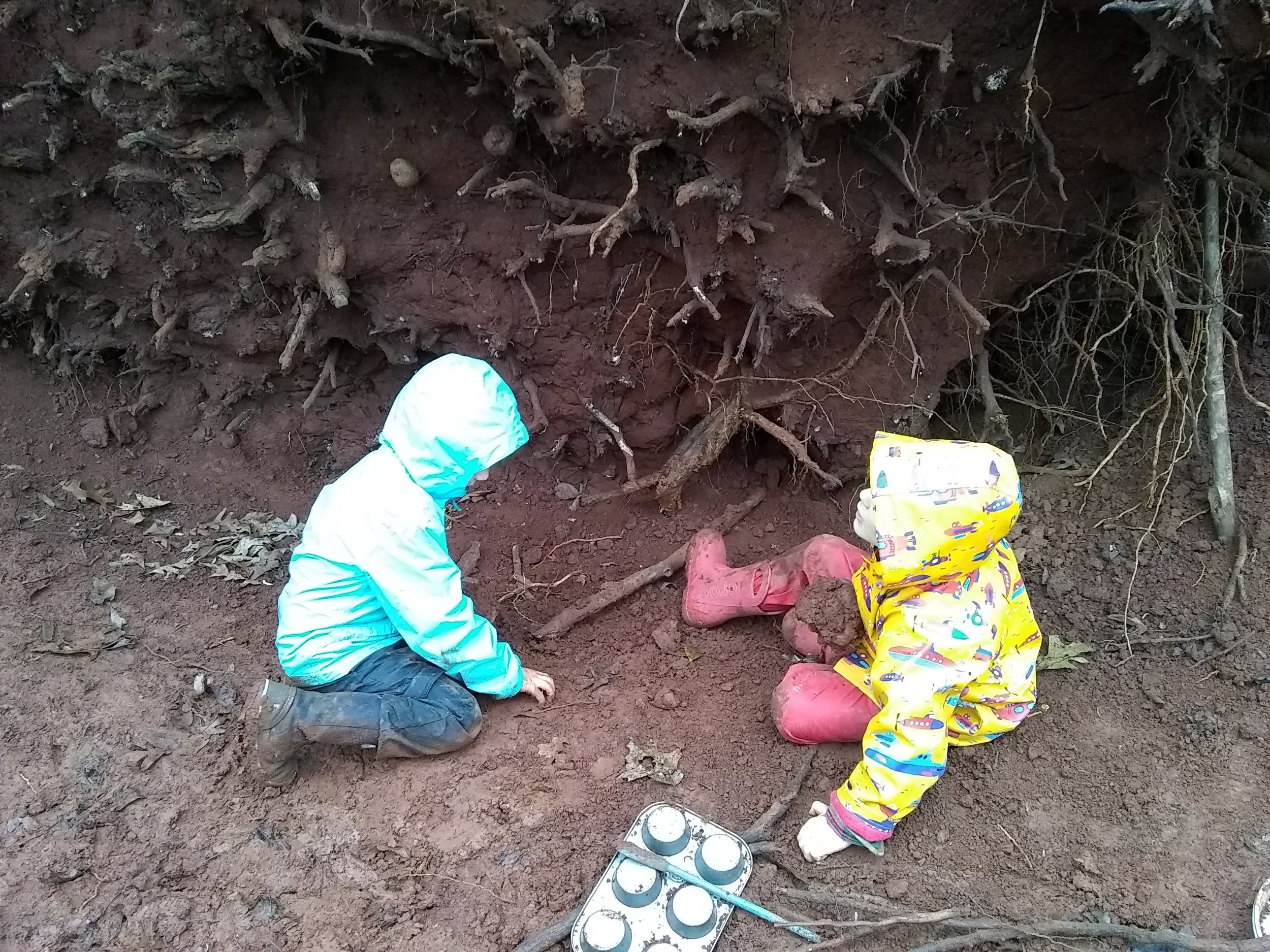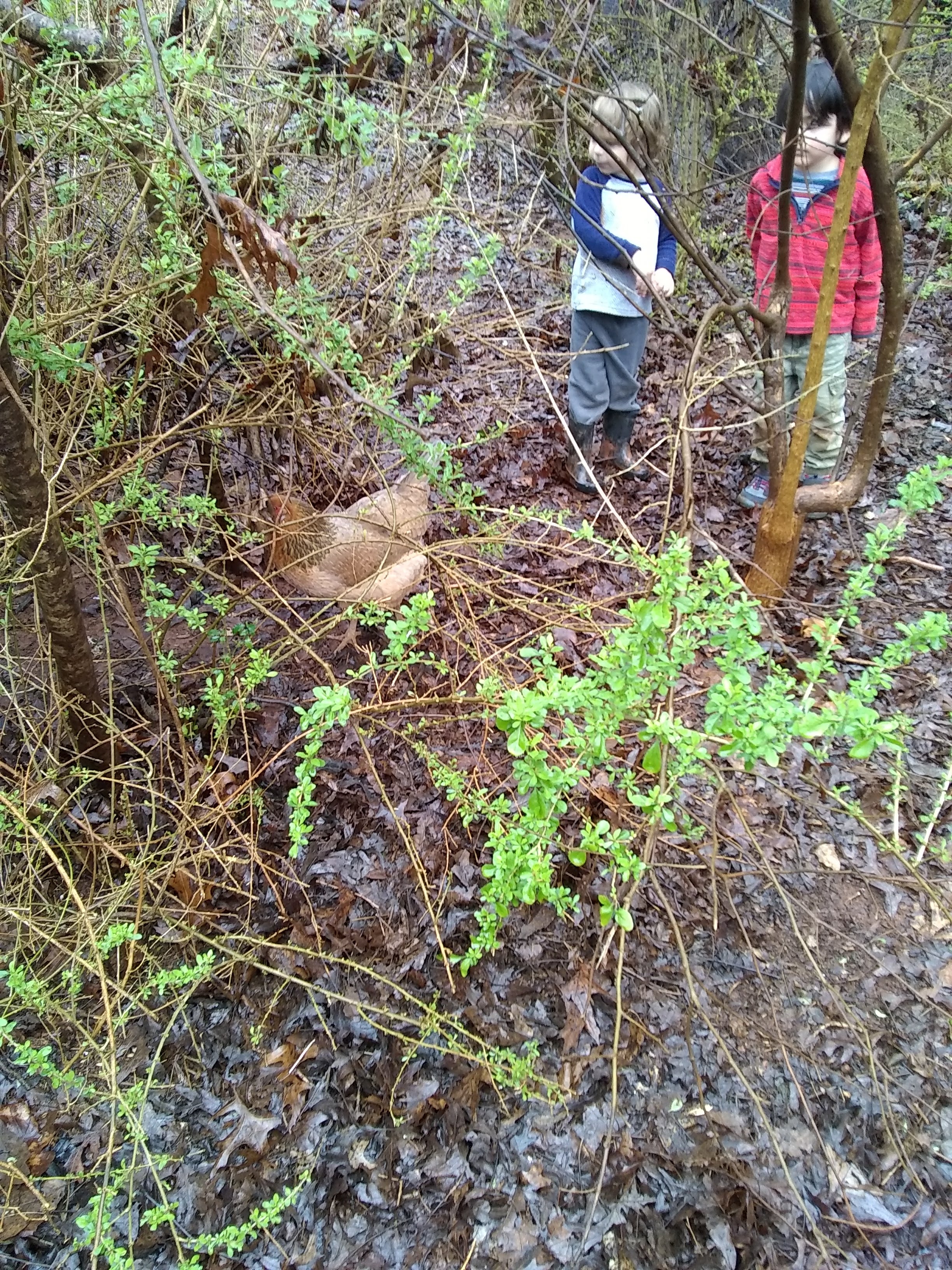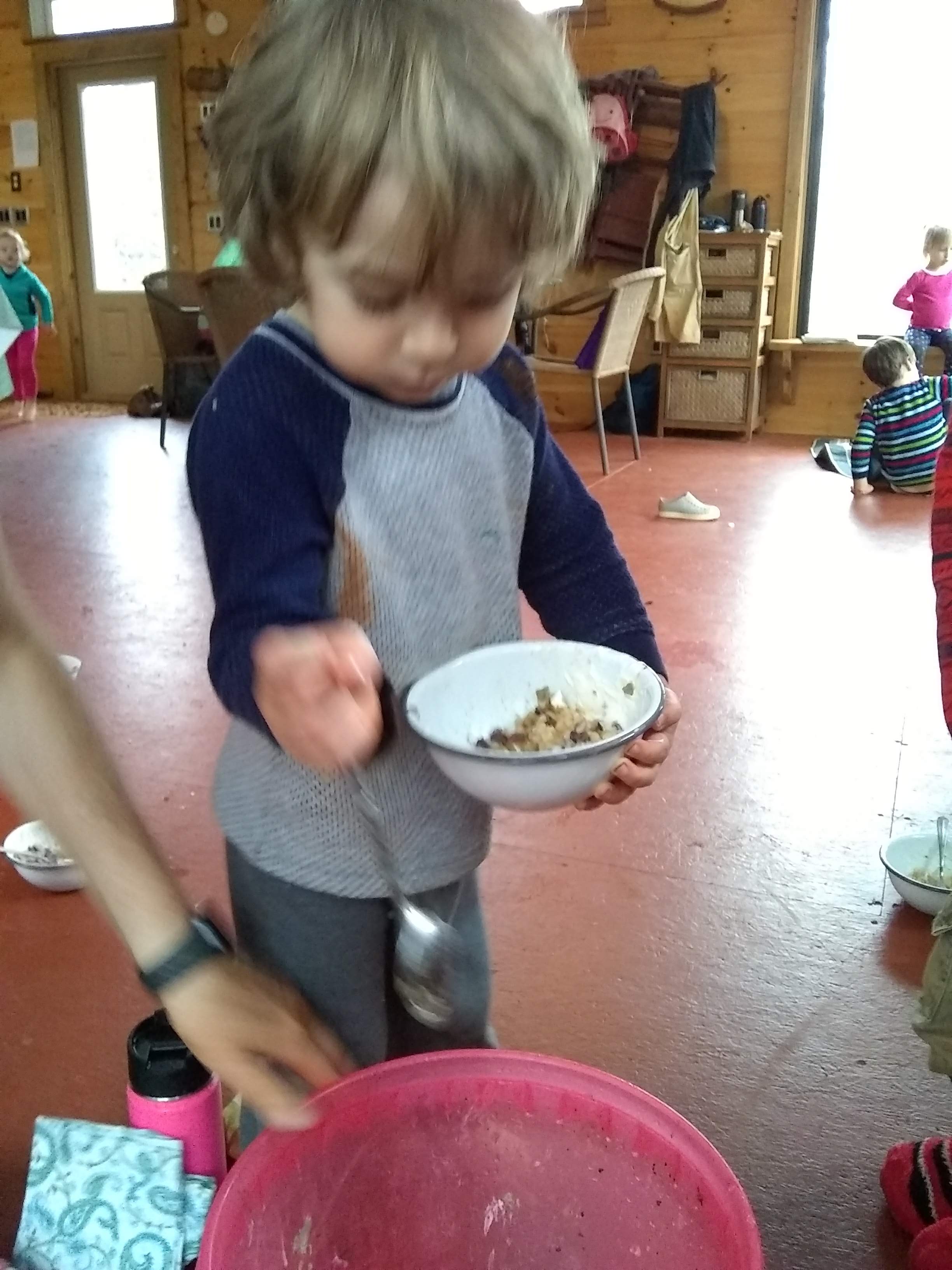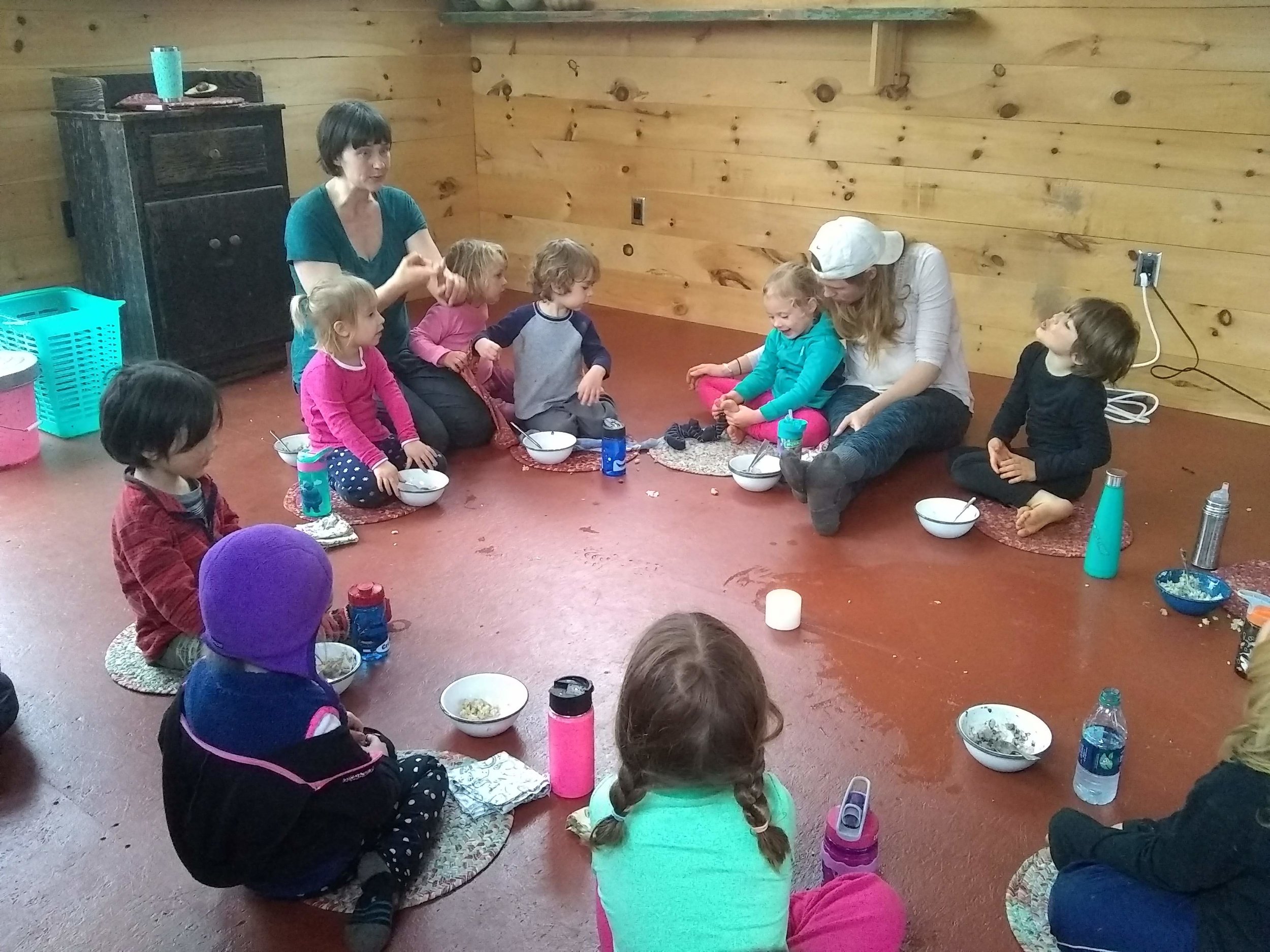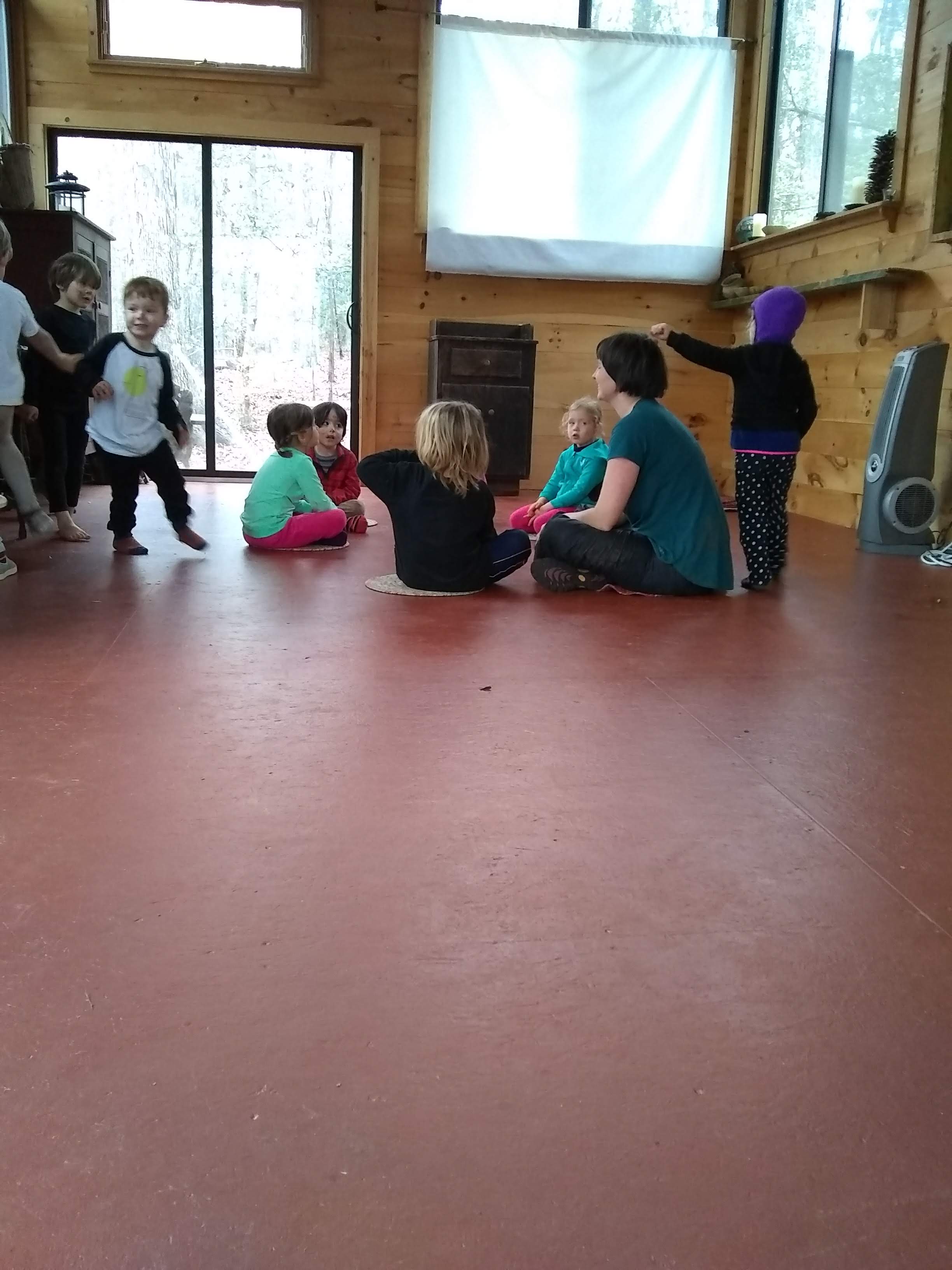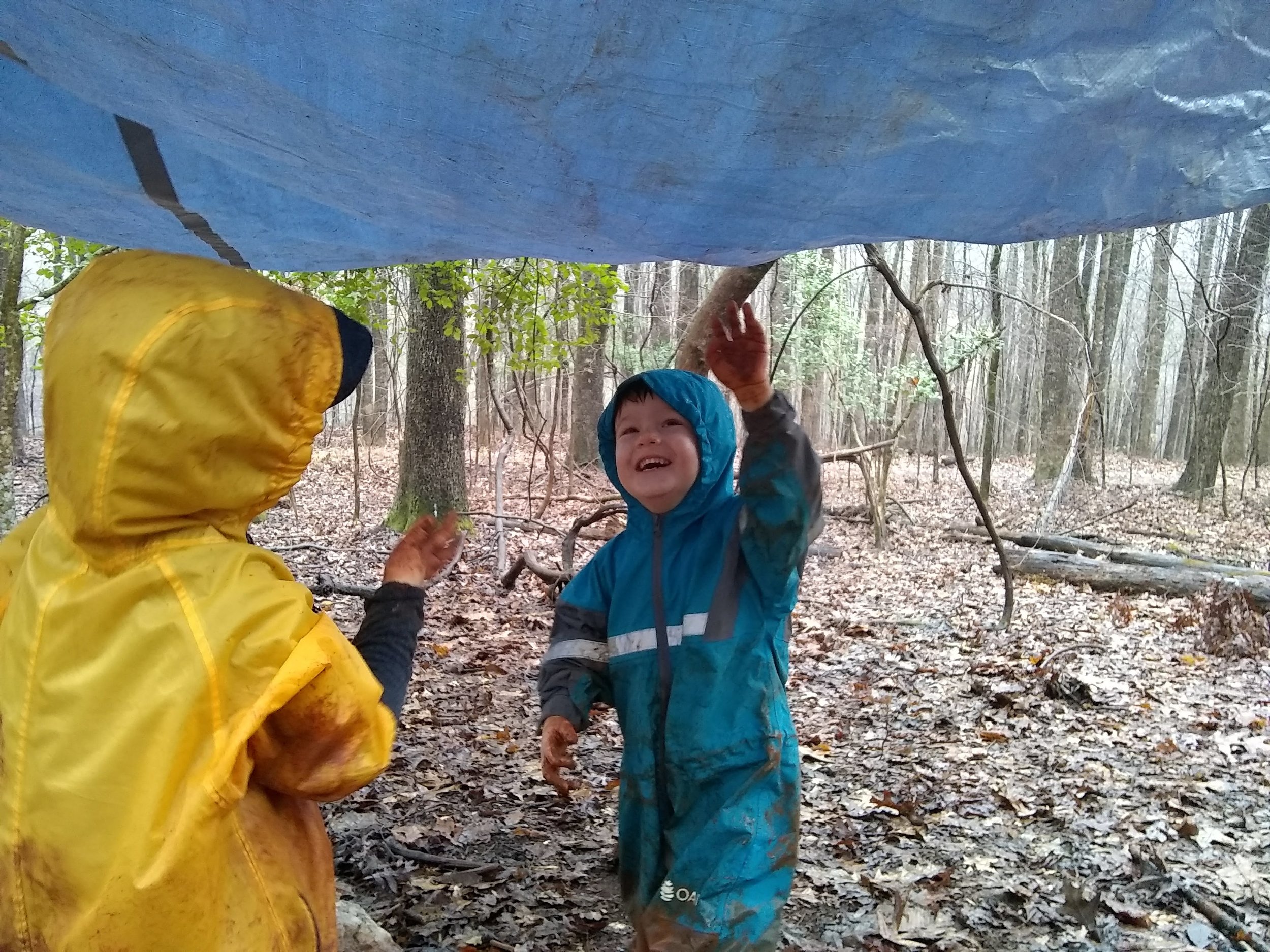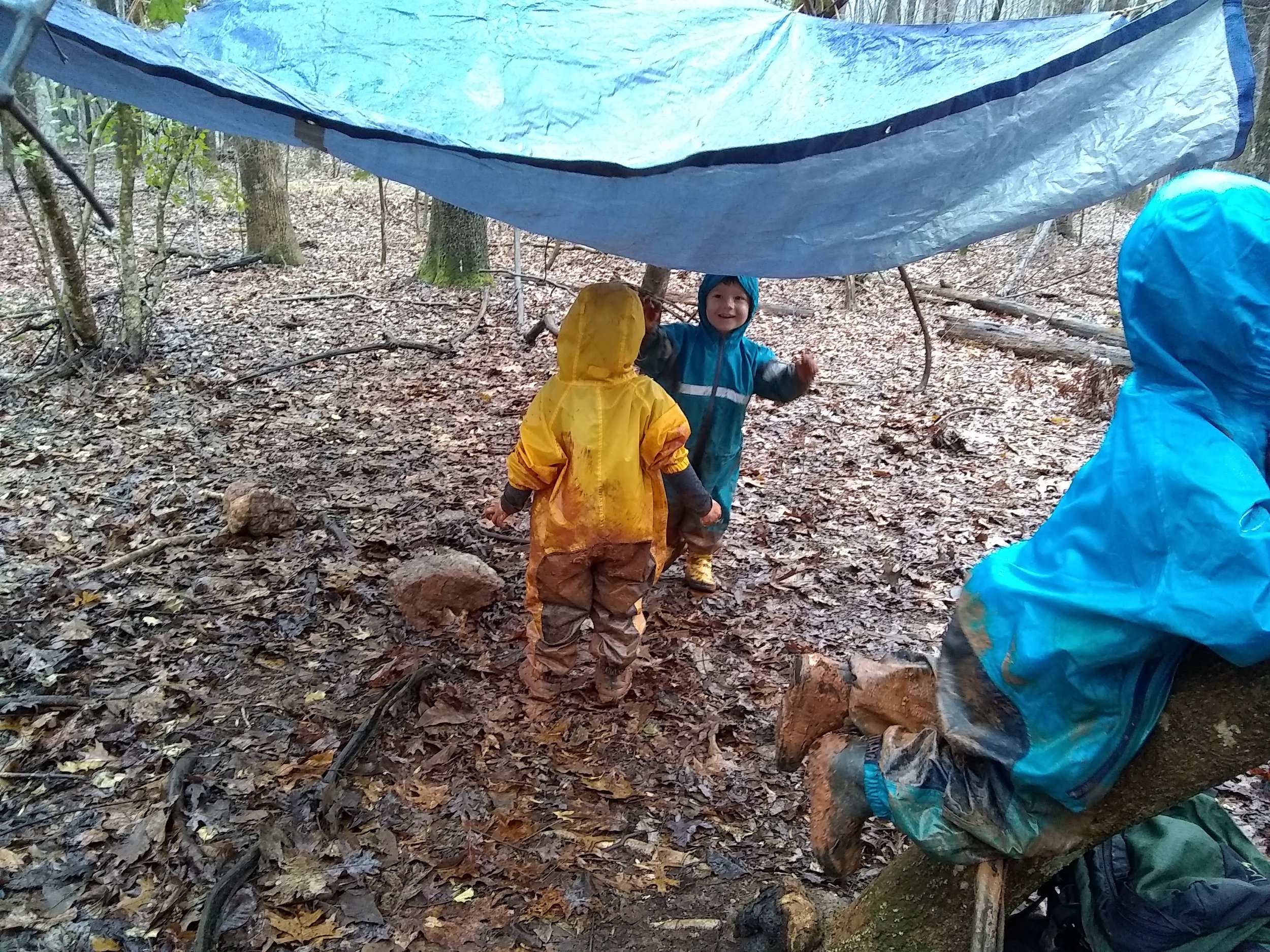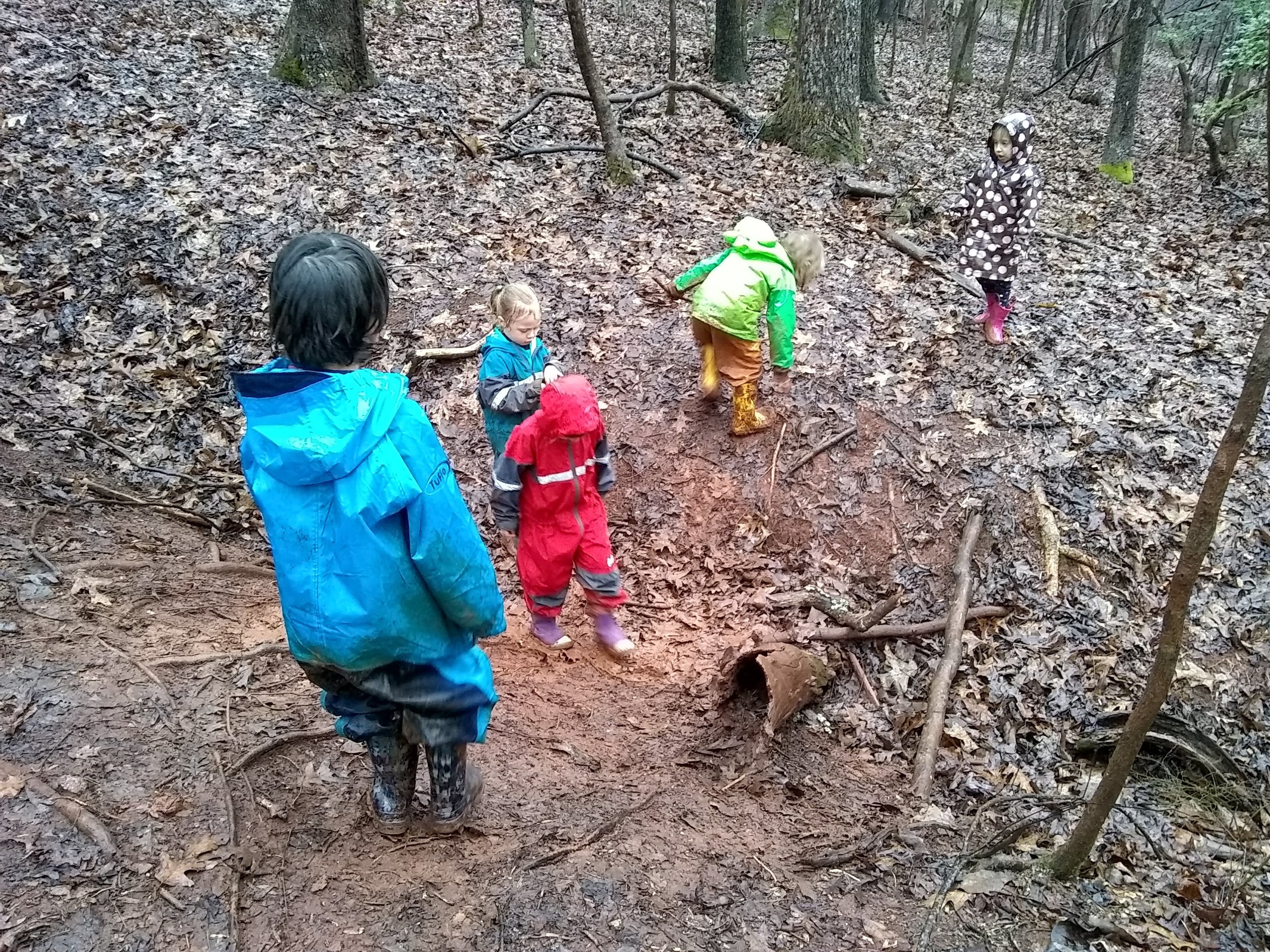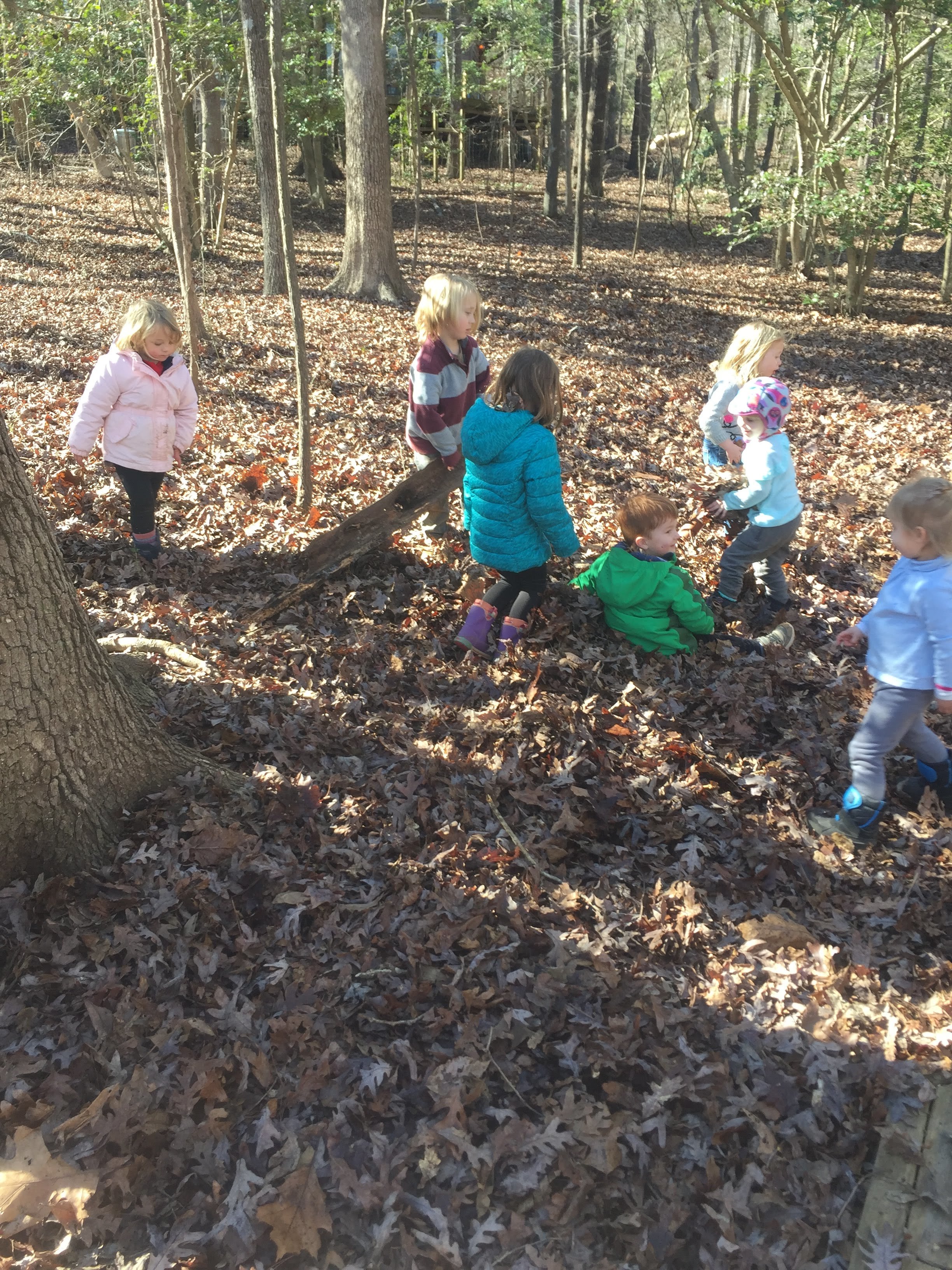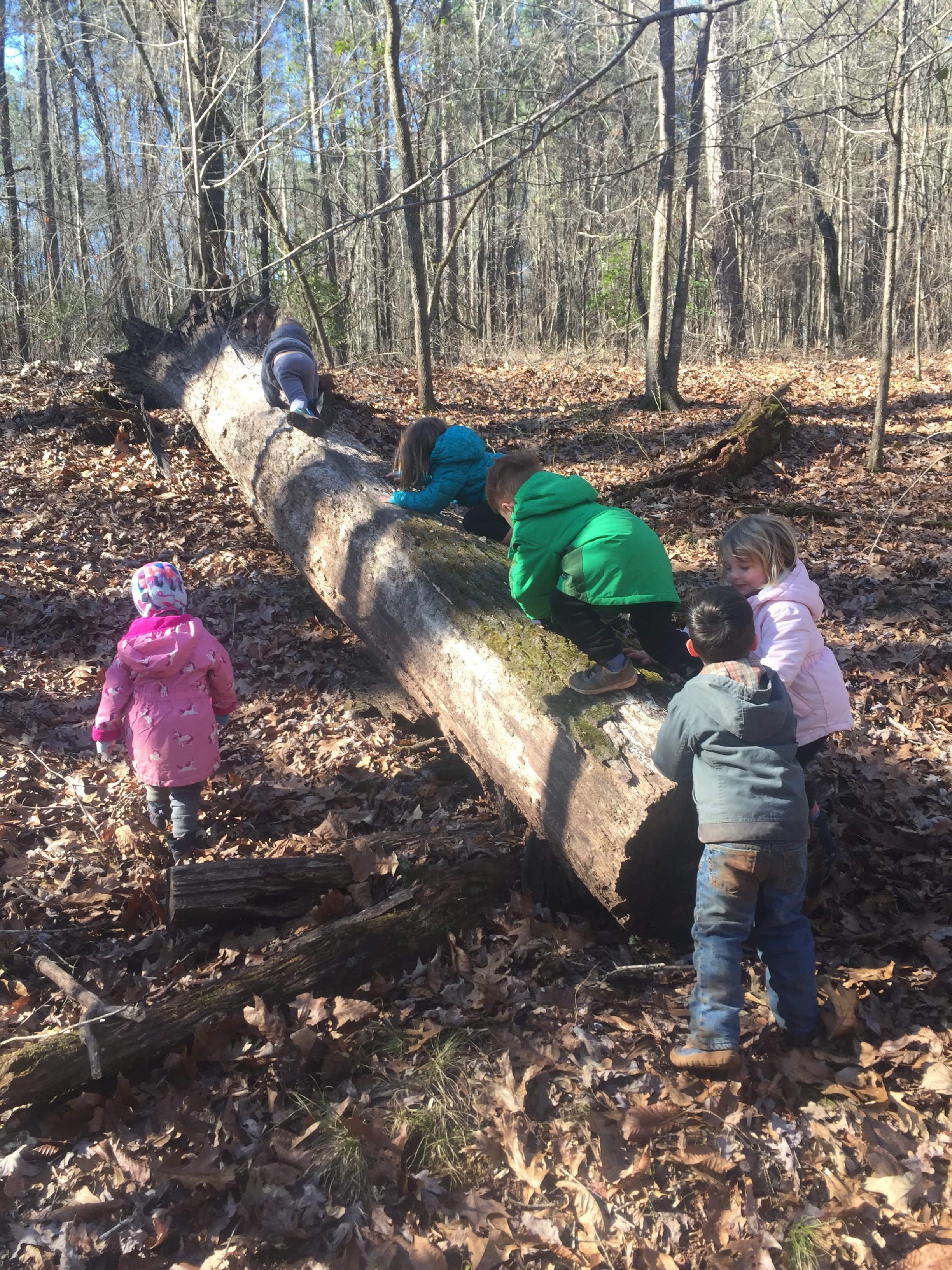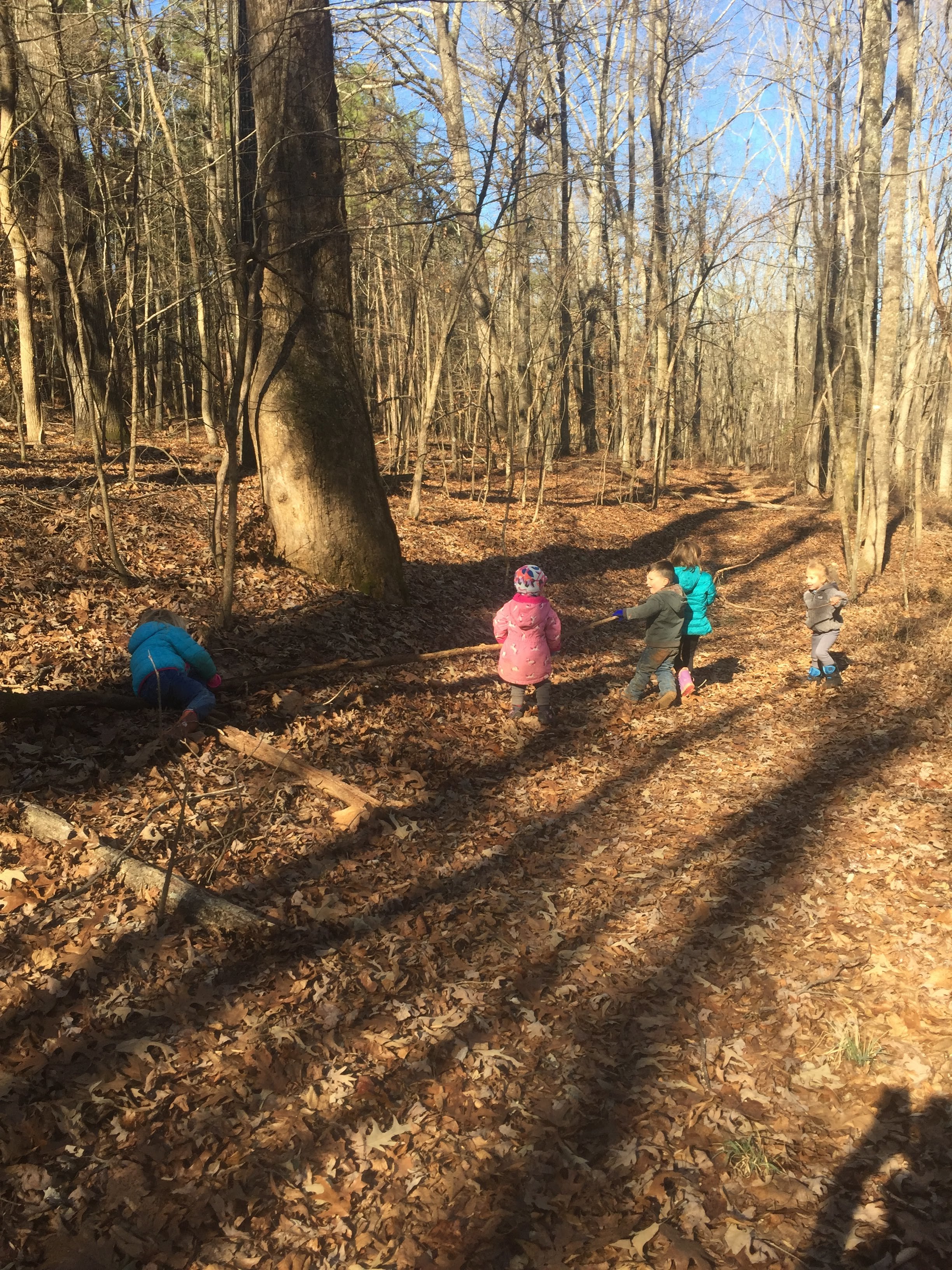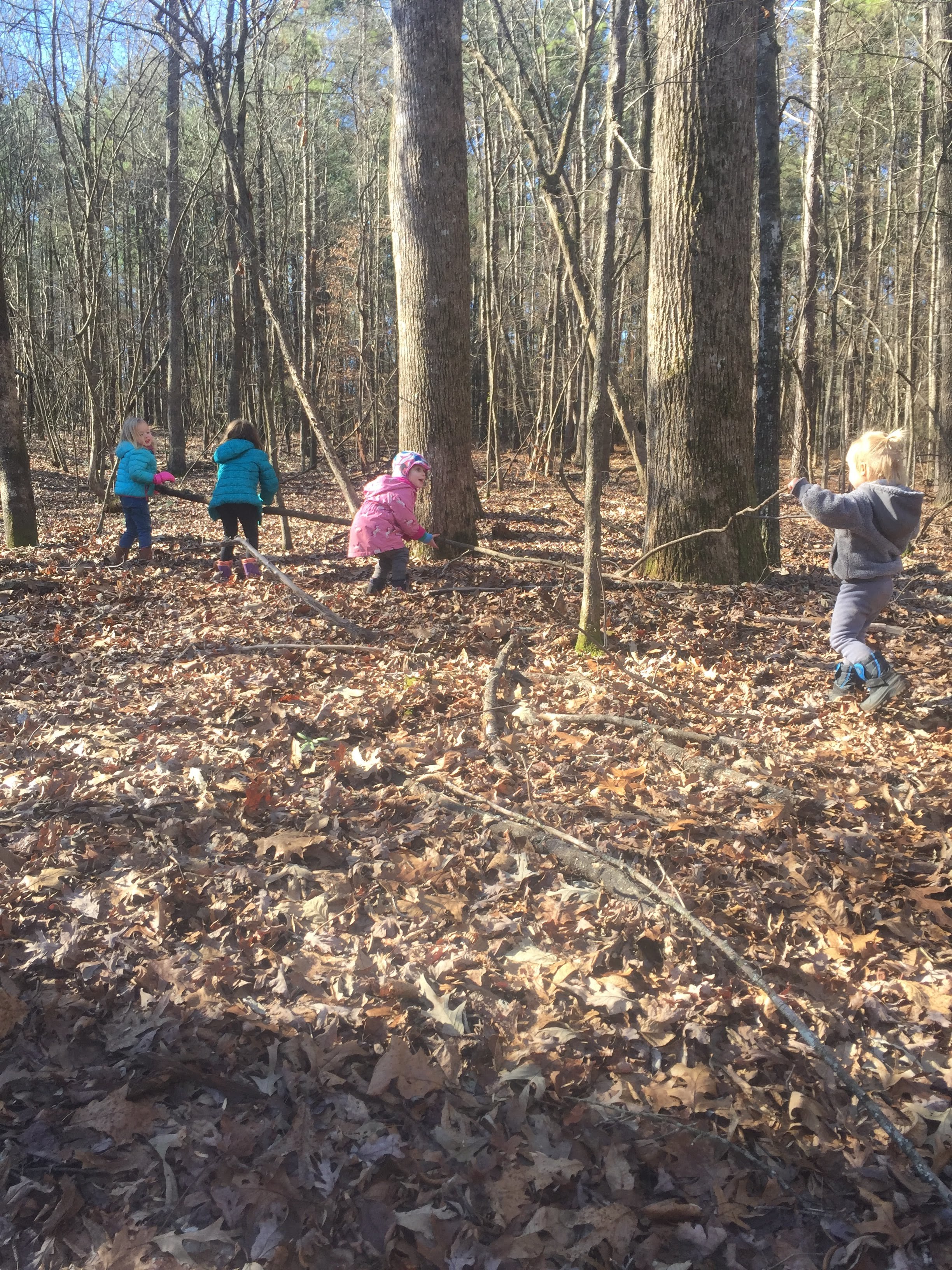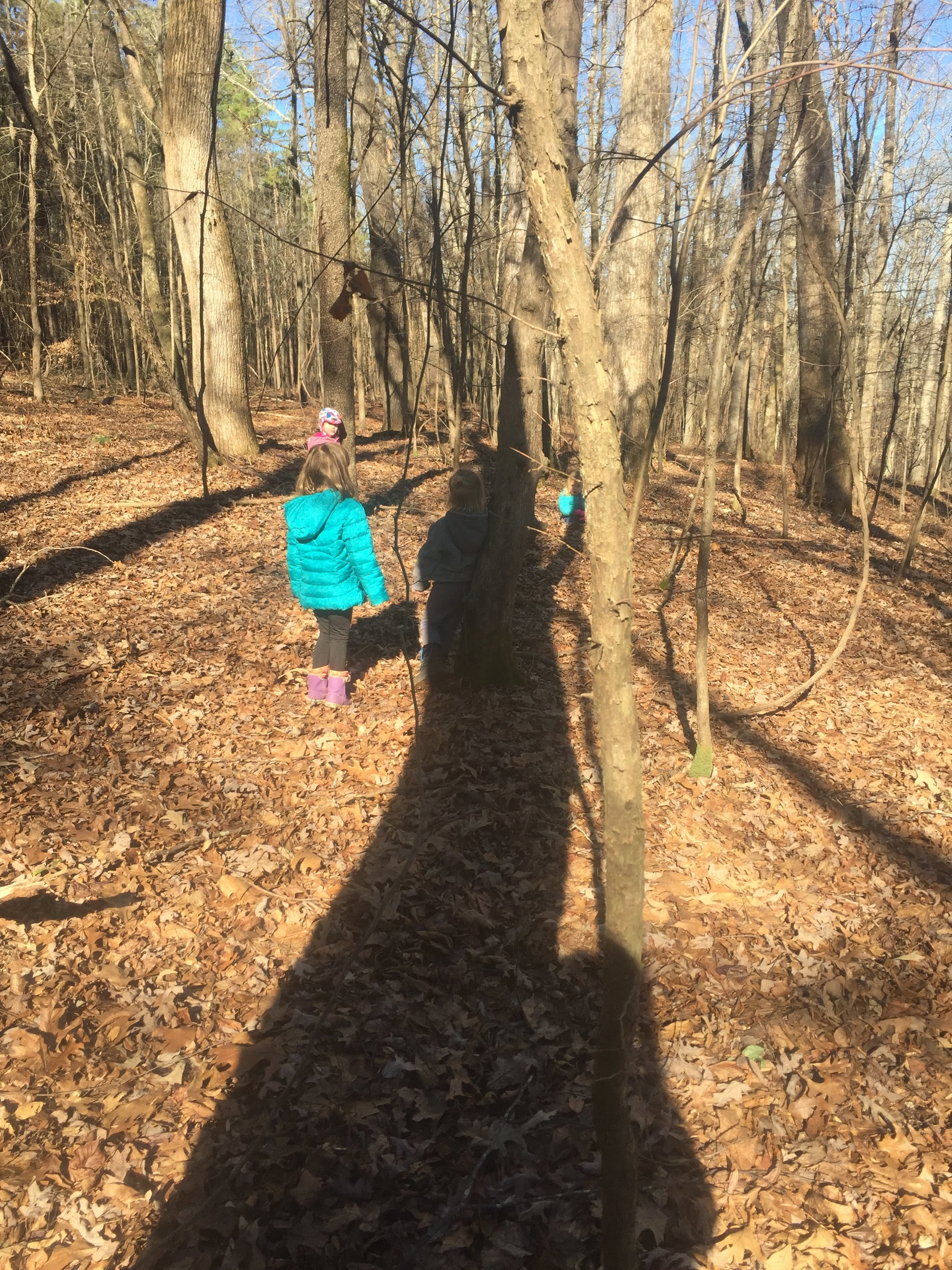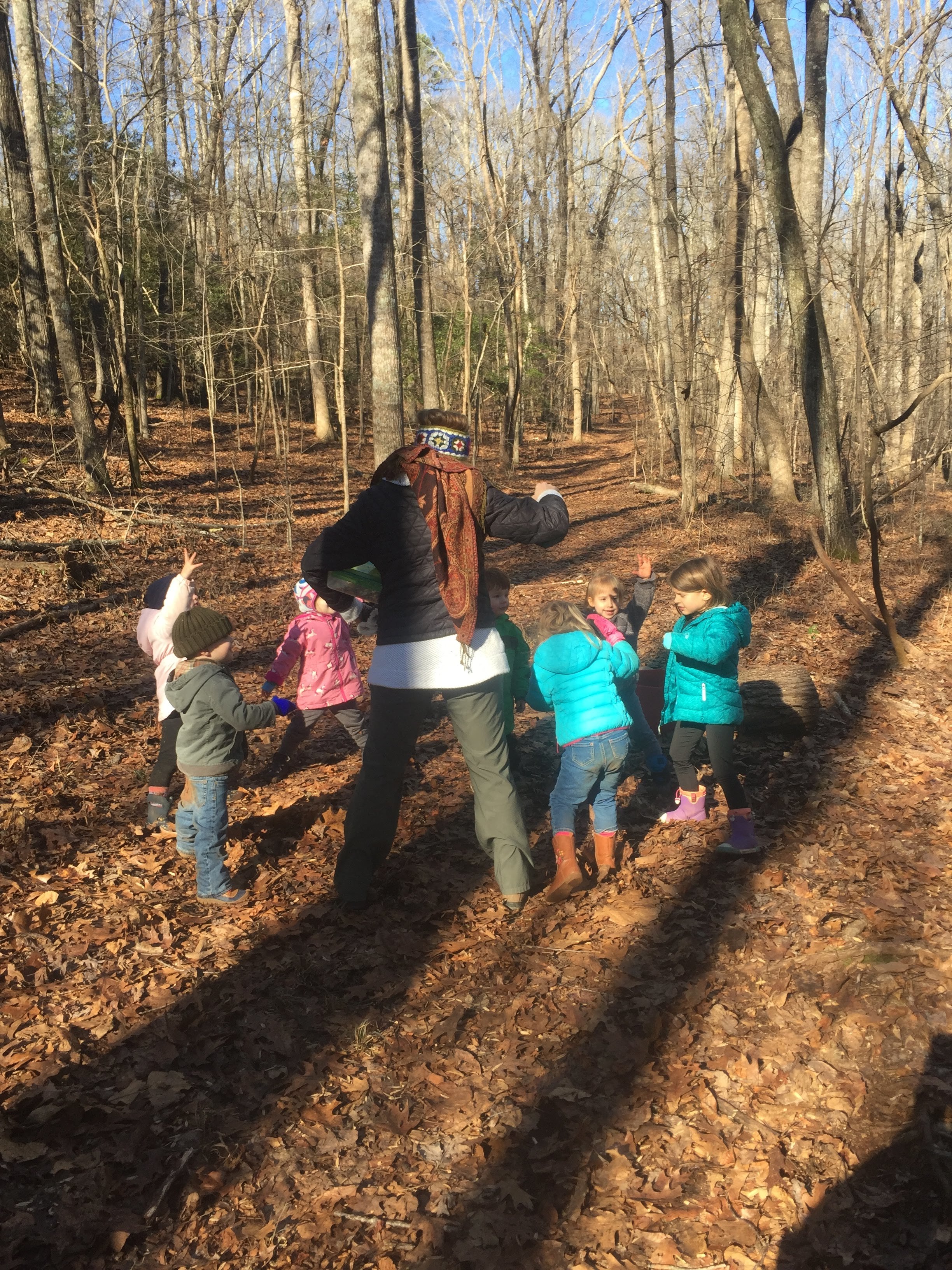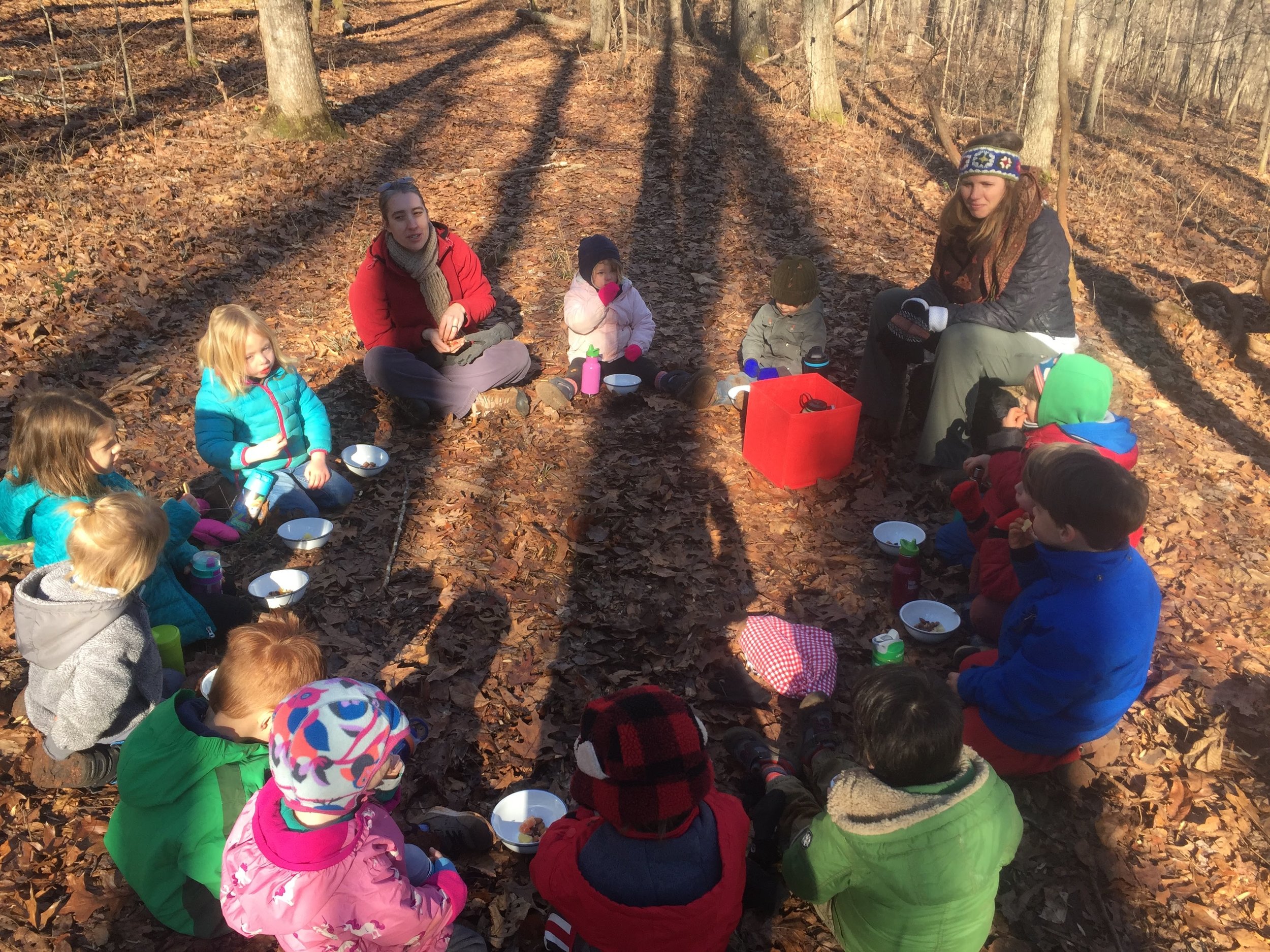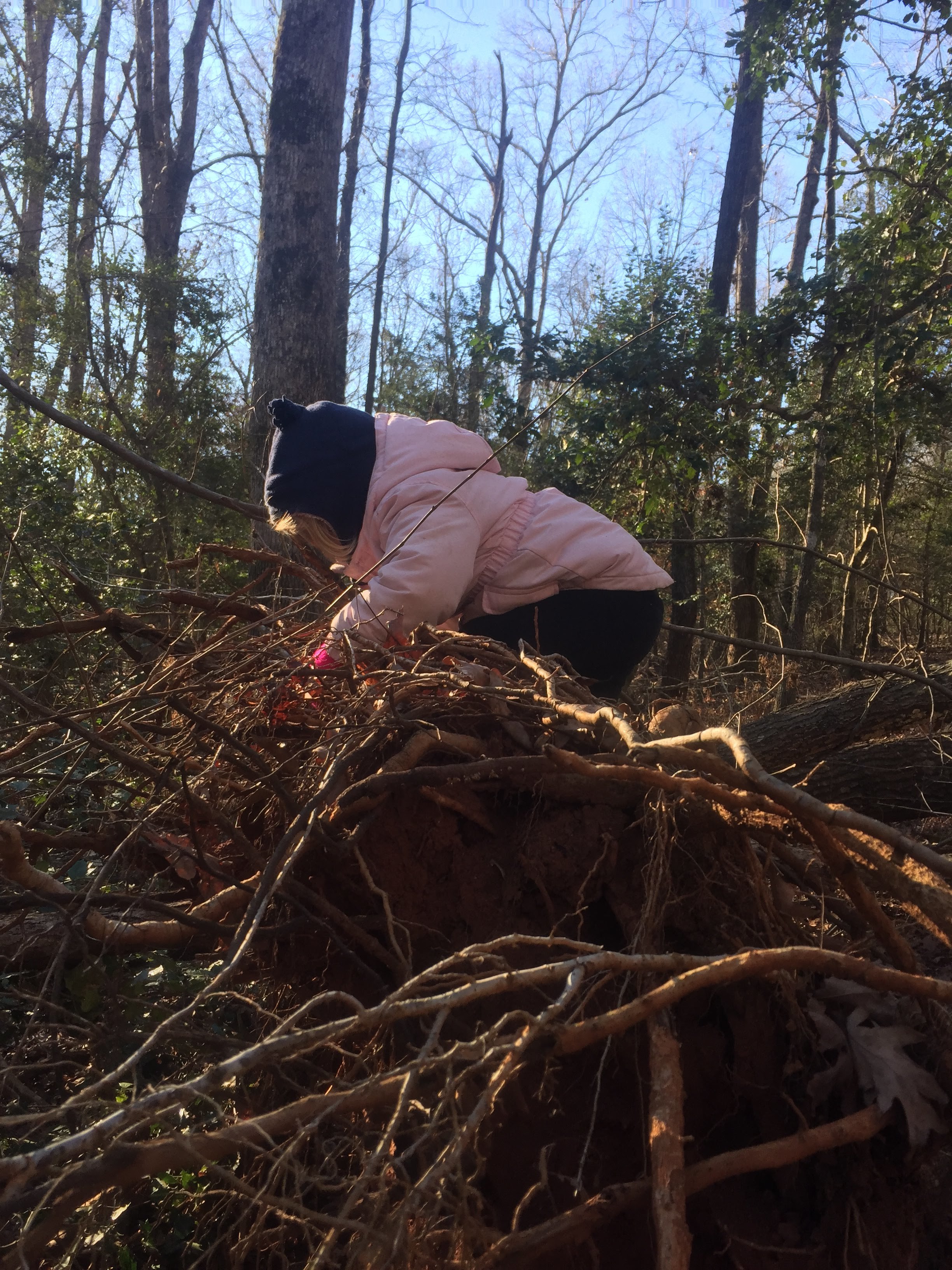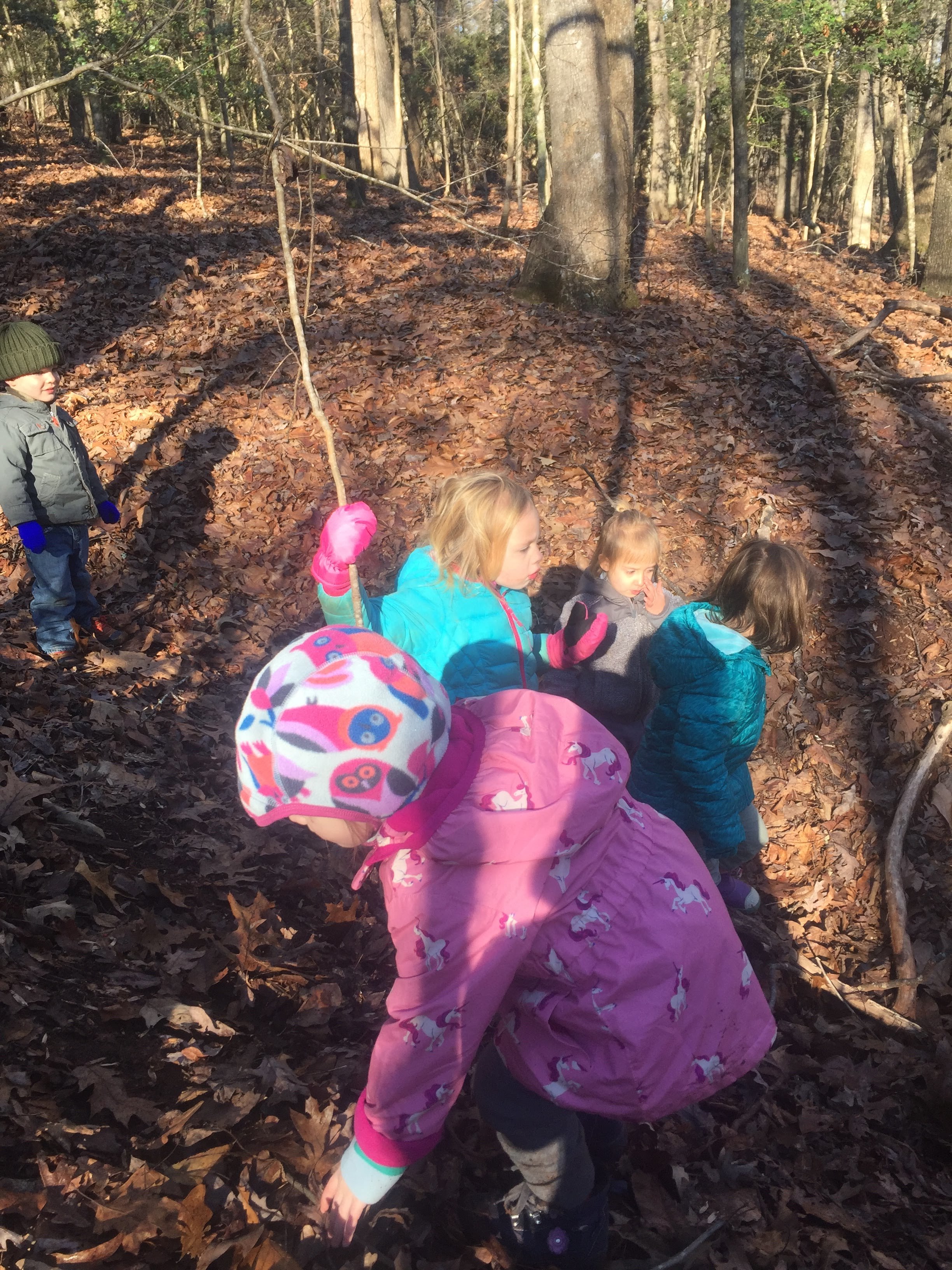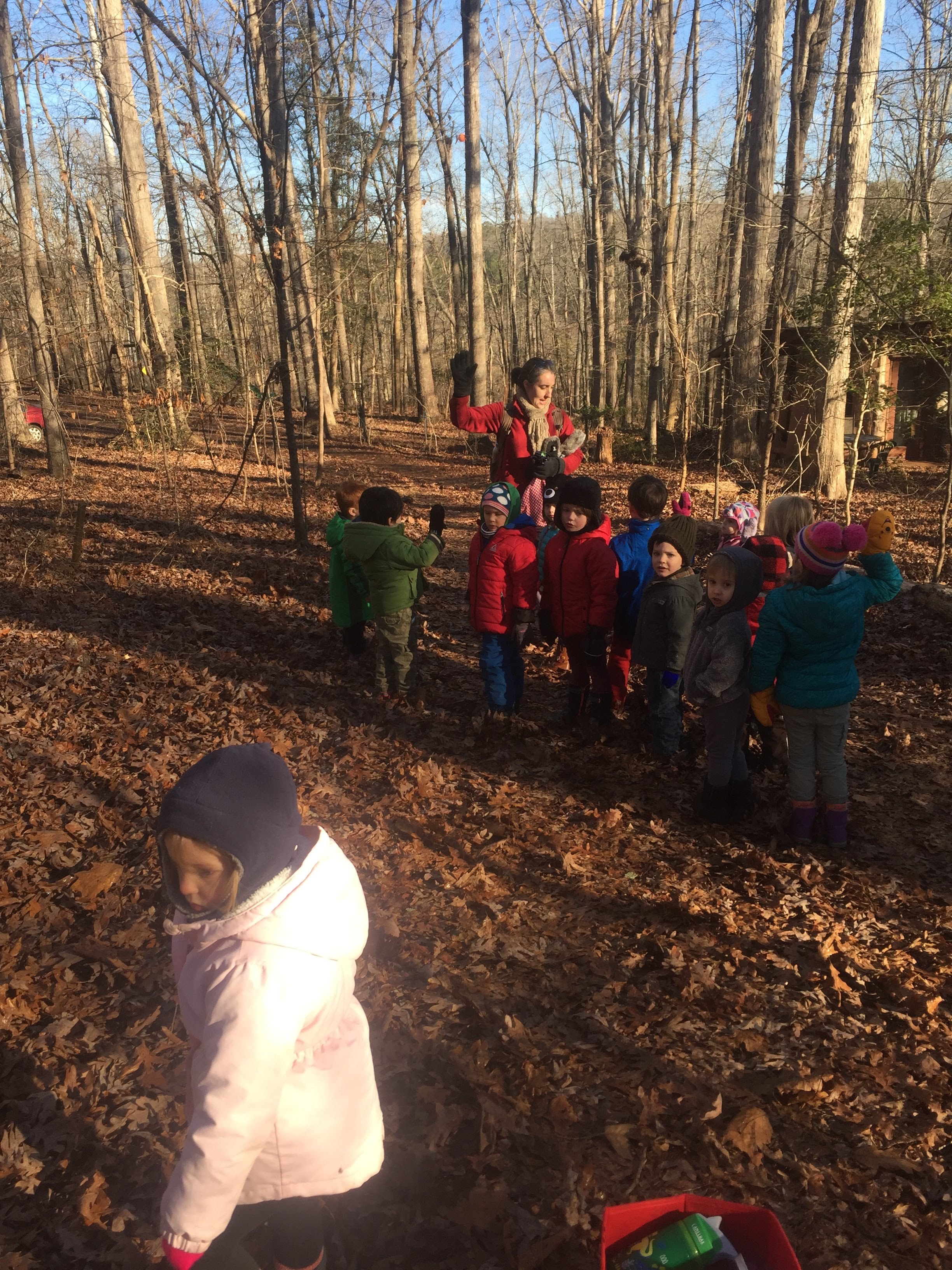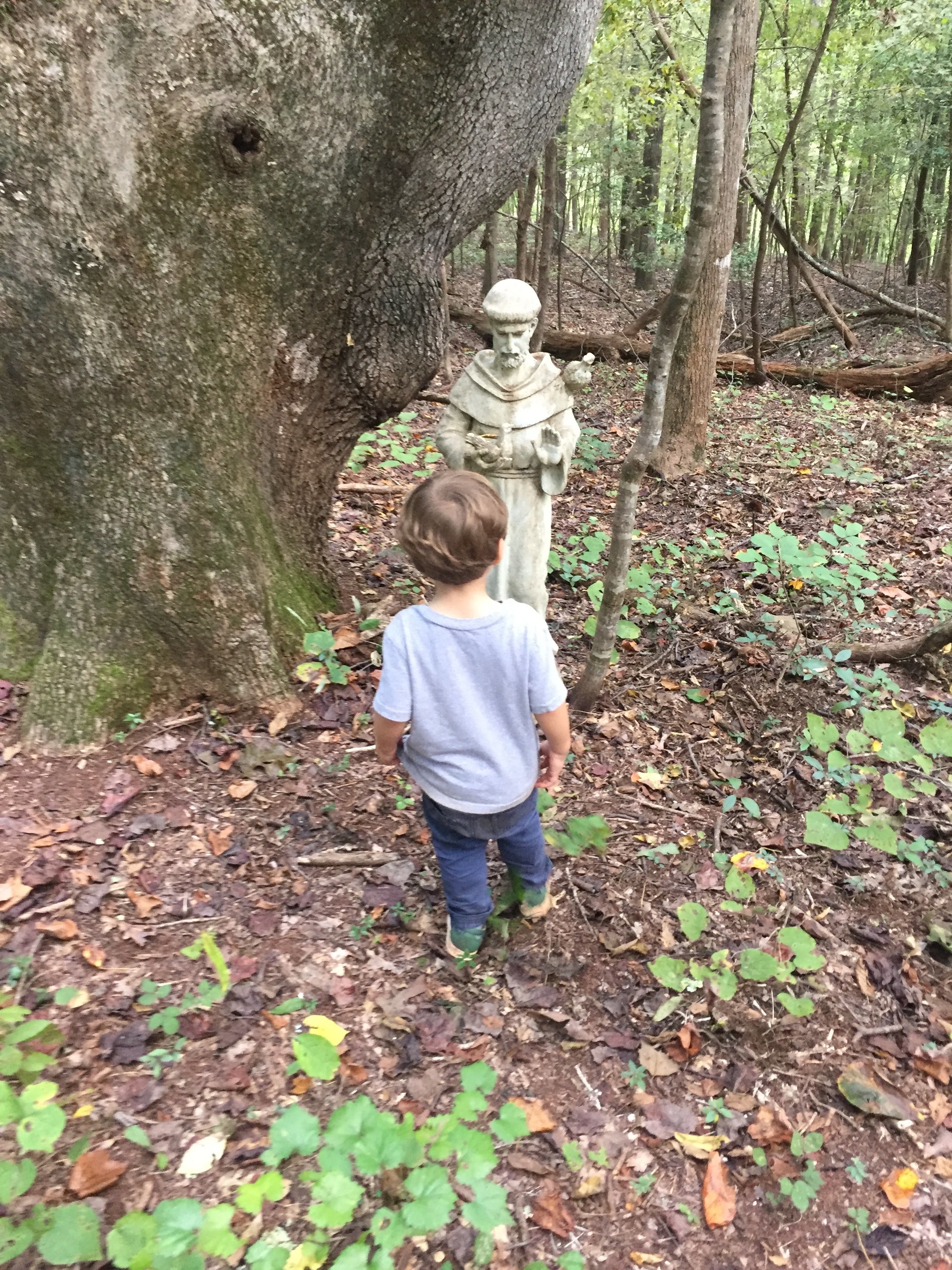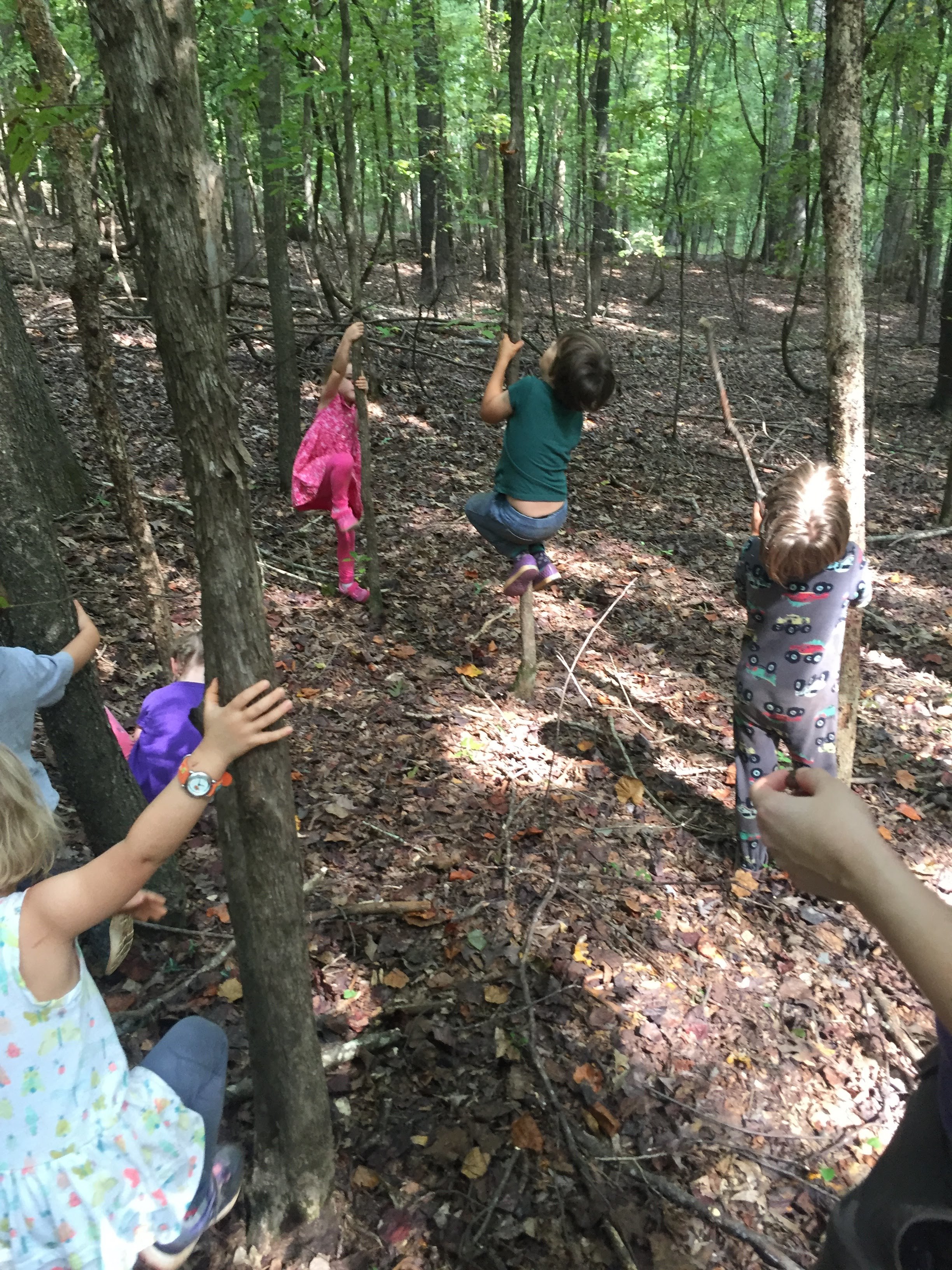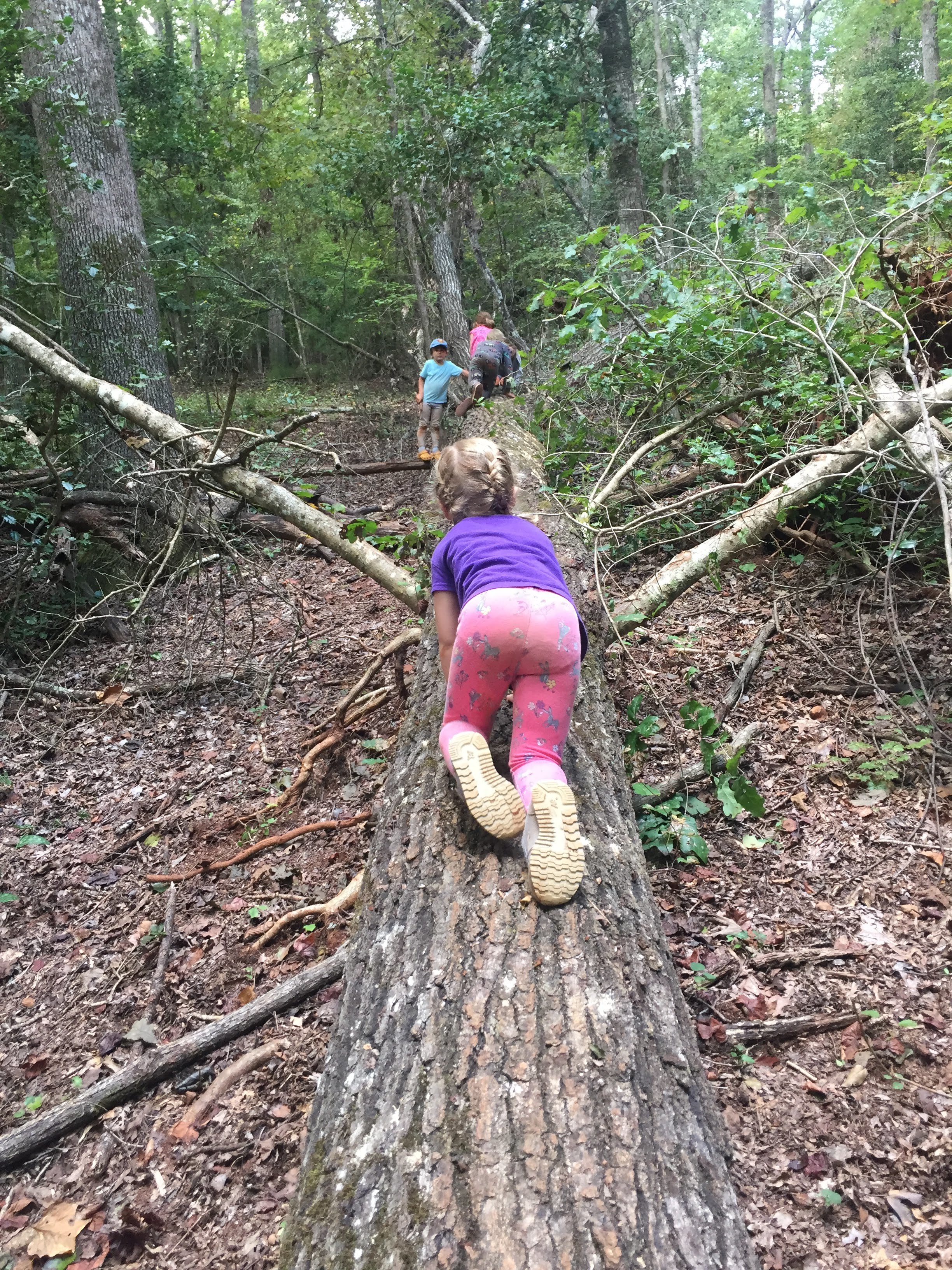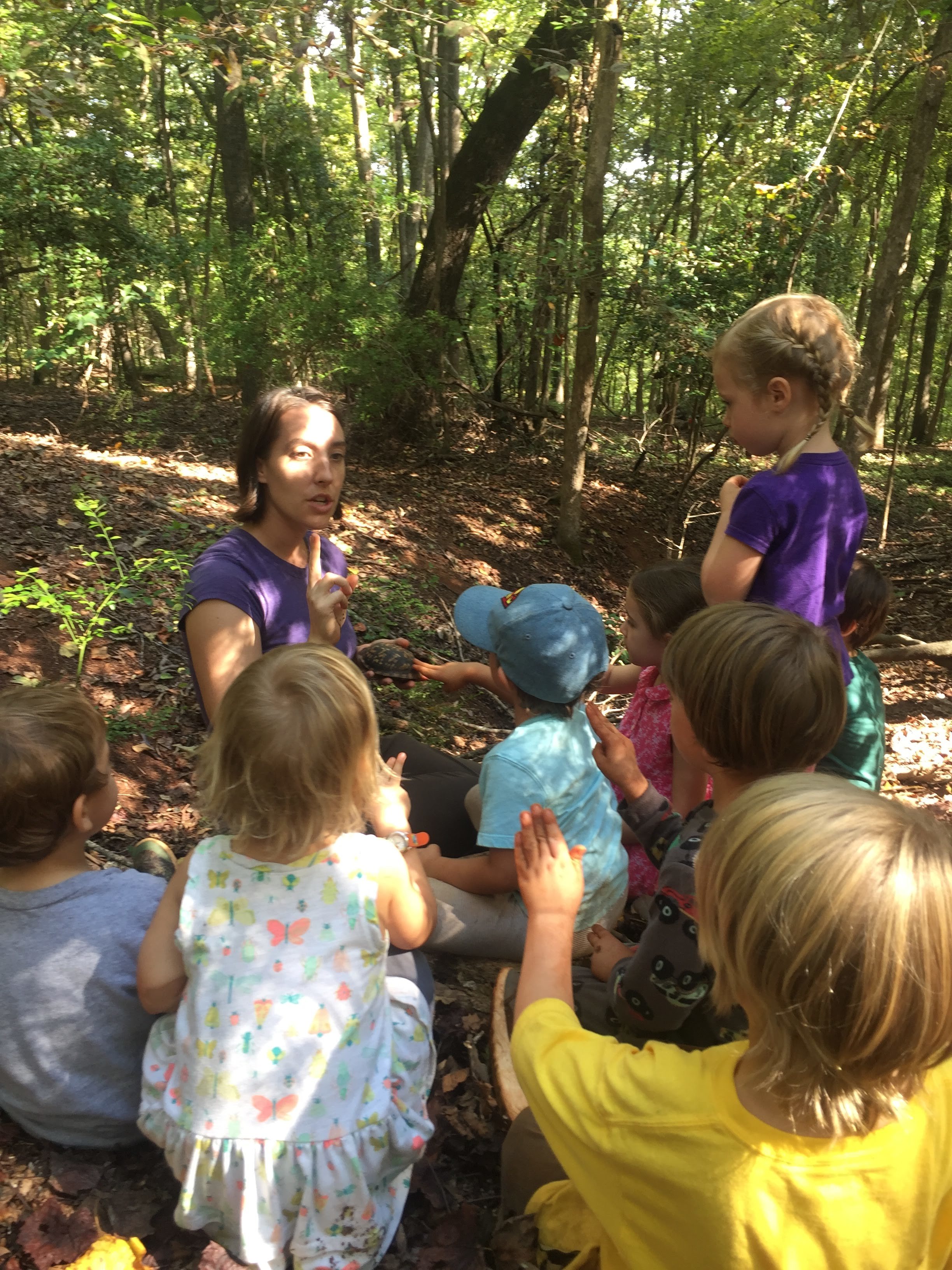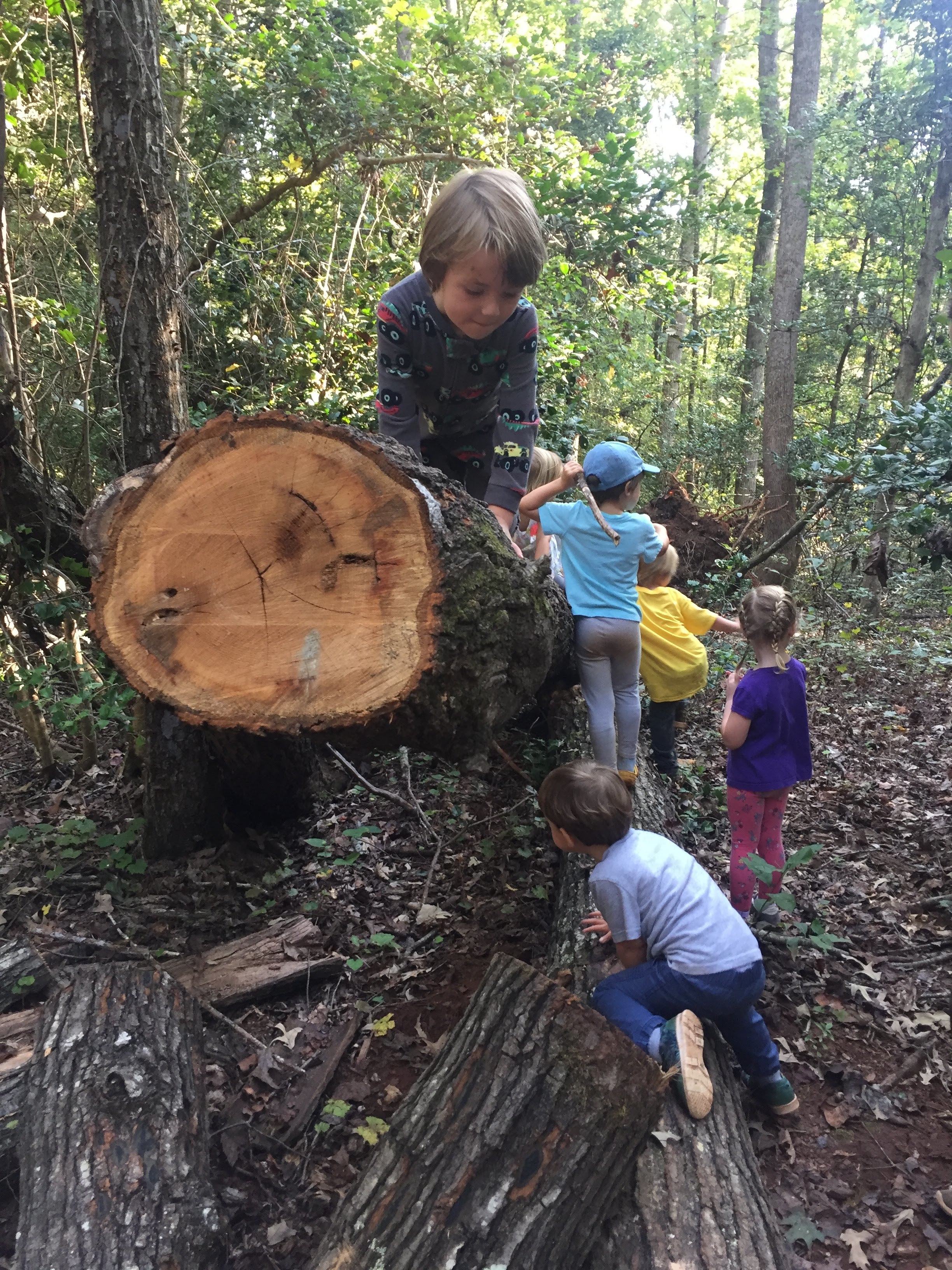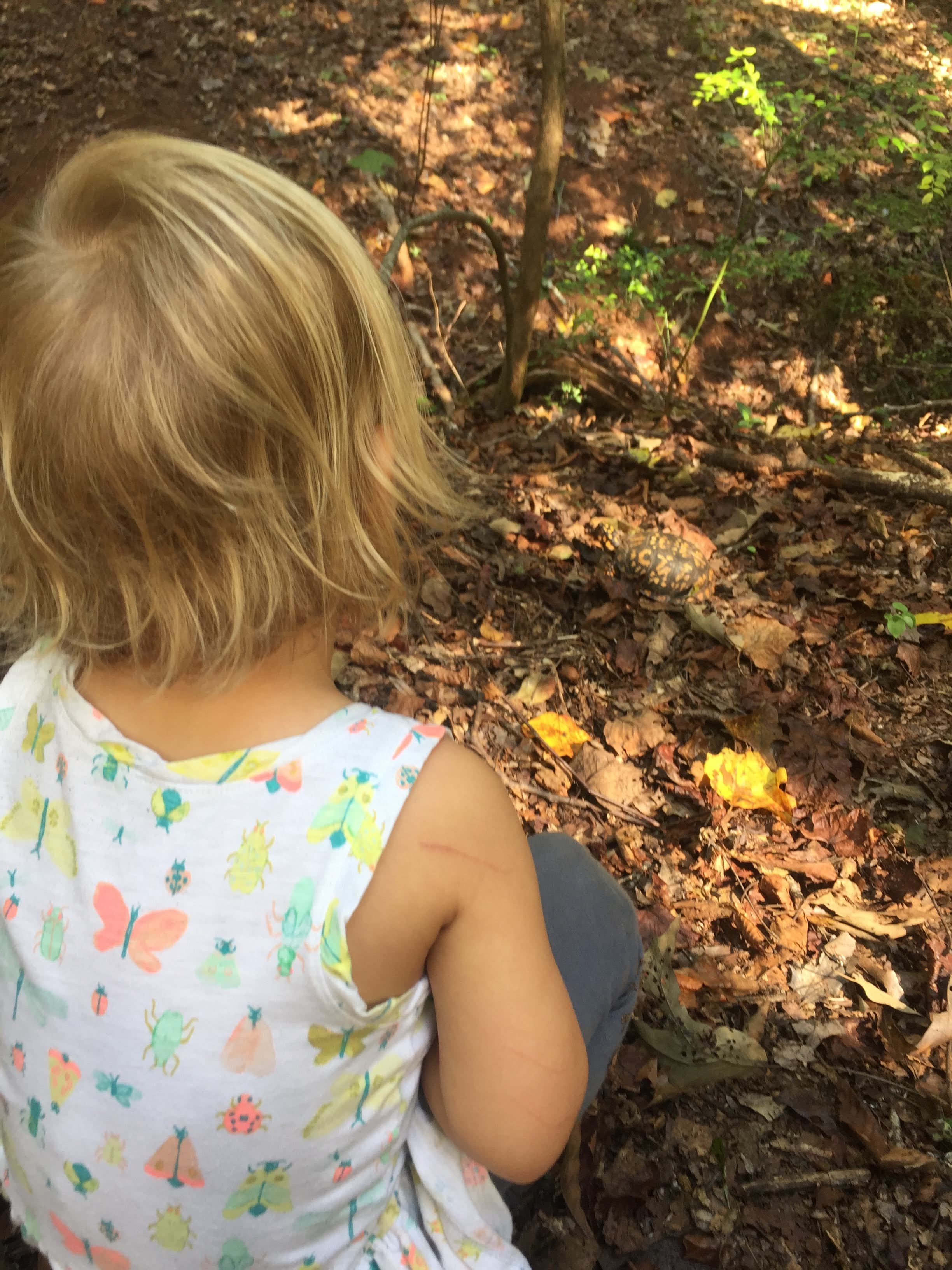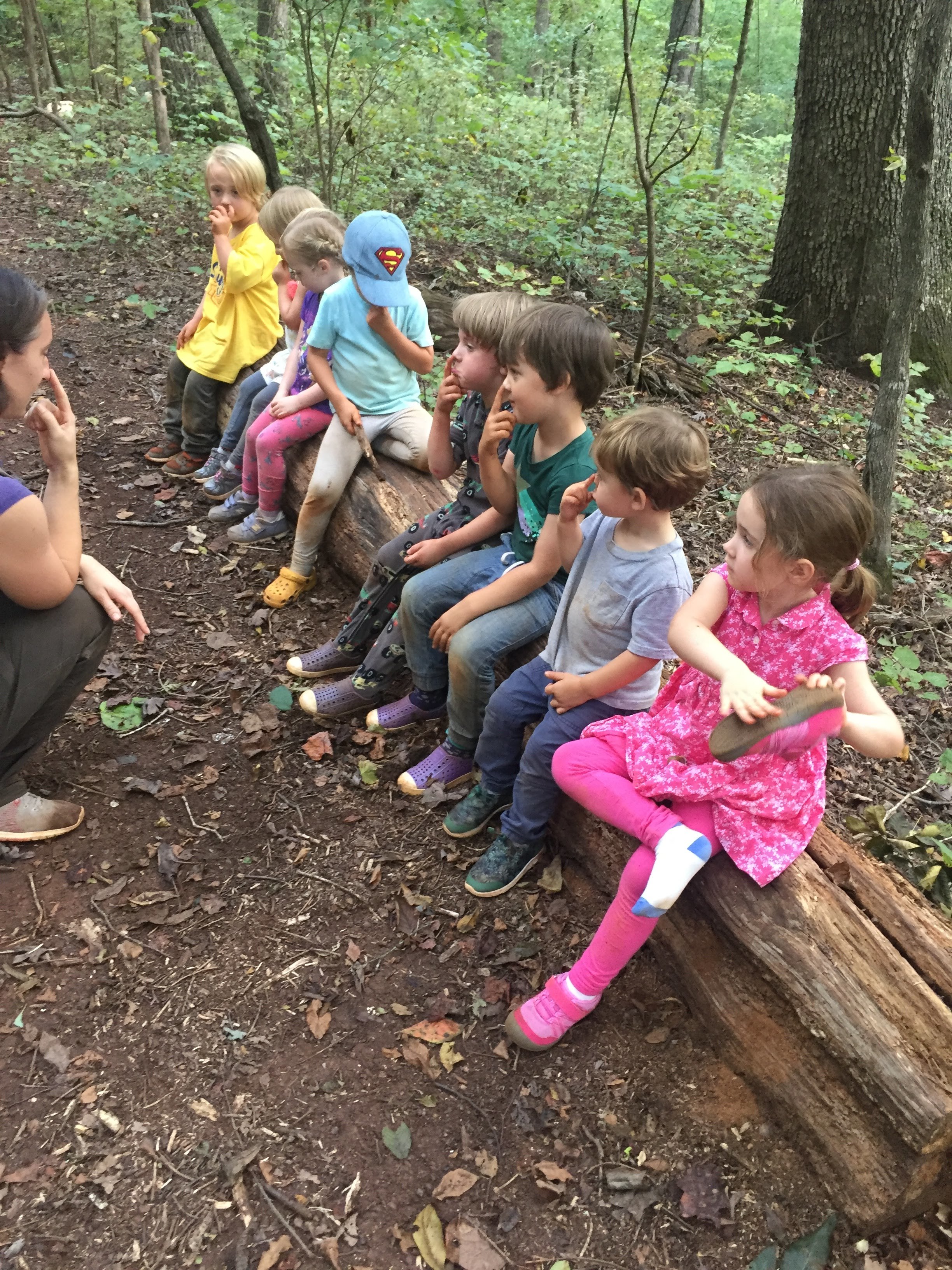This week, several experiences encouraged the teachers to look more deeply at how skill building occurs at Forest Kindergarten. There are many opportunities for children to build basic skills through teacher-child interactions, interactions of children with nature, and interactions between children. At Forest Kindergarten, we want children to build the basic social-emotional, cognitive, and physical skills they will need to navigate their world. This week, opportunities for building critical physical and cognitive skills emerged and teachers, children, and nature were all involved in the process.
One of the things I often hear from other teachers is how challenging it is to teach mixed age-groups. I don’t disagree, however I see the challenge as encouraging as opposed to discouraging. One of the wonderful things that often emerges in a mixed age-group is that children teach each other basic skills. This happened twice on Friday at Forest Kindergarten (and probably more, but these stories are what I recorded!). During our play at Root World, Maddux became very busy working on his balancing skills on a large, downed tree. He would walk up the tree with his arms outstretched, and would concentrate hard to increase his pace without losing his balance. He did not need to crawl at any point during this process, and he was always able to catch his balance whenever he began to slightly lose his footing. His face showed how proud he was of this ability. Amy felt the need to acknowledge his pride in his accomplishment, and told Maddux she could see he had worked hard on balancing and he had become great at it. Maddux replied, “I know, I am a really good balancer”. Not long after this, August, who is one year younger than Maddux began to work on balancing on the same spot. August had been working at Root World behind Maddux, and observed some of Maddux’s work. Observation of other children (and teachers!) is one of many ways children learn skills, and August showed how powerful observation can be. He too began to climb along the tree, practiced standing up and walking, just in the way Maddux had done. August does love climbing, but it is hard not to believe that the observation of another child practicing a skill didn’t motivate him to work on the very same skill! Although the children did not directly teach each other during this interaction, it is an example of how interactions among children can encourage basic skill building.
Of course, children teaching other children is not limited to our older children teaching younger children basic skills. Younger children are also capable of providing important basic skills to older children, and children of the same age often teach each other, too. In our second story of child interactions, Margaret showed interest in the activity Cristian had made up for himself using 3 small stumps. Cristian, who is 4, was enjoying jumping with two feet from stump to stump, working hard to keep his balance when they wobbled. He practiced over and over again, until he could successfully jump from one to another without falling off. His delight at this activity drew the interest of Margaret, who is also 4. Margaret is our most recent addition to the Forest Kindergarten family, and Cristian was very welcoming to her. Margaret wanted to know if she could try, and Cristian agreed to give her a turn. When she moved from stump to stump one foot at a time, instead of both, Cristian offered to show her how he had done it. He demonstrated how he jumped with both feet, and encouraged Margaret to try again! Although she was hesitant to try it his way, Margaret was encouraged by Cristian’s support and gave it another shot. It was enjoyable being a teacher watching this interaction, and observing how the children used verbal and body language to express themselves and help each other!
The physical components of nature provided the space for these physical skill building activities to occur. Nature also provides many opportunities for building cognitive skills and helping children understand more about the way the world works. The teachers have noticed different interests in the group, and work to bring in activities that will engage children in thinking about their world and wondering how things happen. One thing that has happened often is children being interested in seeds and how things grow. They have found maple seeds and tried planting them, and even wondered if the planted a dead bug if it would come back to life. Thinking about children’s interest in growing things has been part of our motivation to be more intentional about our composting work. Amy is looking for spaces during our Forest Kindergarten day when it makes sense to discuss composting and gardening. During story time is one part of our day when it is possible to directly engage children in doing some basic cognitive skill building. Our first story this week was the classic, The Carrot Seed by Ruth Krauss. When working with mixed ages, it is important to provide varied ways of engaging children’s cognitive skills that are developmentally appropriate. Our younger children enjoy story time as much as our older children, and are making important literacy connections when we read to them and choose engaging stories. Amy chose The Carrot Seed this week, because we began our compost crew in earnest last week- and conversations about gardening had begun. The Carrot Seed, which shows a boy caring for the carrot he planted and patiently waiting for it to grow, opened a dialogue with several of our 4 and 5 year olds about what they know about gardening and growing things. They understood that seeds need water to grow, that weeds take up space and keep the seed from growing well, and that seeds need sun! The children also knew that carrots grow under the ground, and we talked about all the different colors a carrot might come in. This enthusiasm about gardening and caring for a plant makes our composting more relevant for the children. Amy could begin to understand what children already know about the basic requirements for plant life, and can add in a discussion about why compost for a garden is important. Children know plants have to drink water to grow, and get sun, so it is an opening for us to discuss how they also need to eat! Children also understand that living things like plants need care, which is another reason we are composting. We want to teach children about caring for our space at Earthsong and the living things that are here. By introducing composting and caring for our good scraps each week, we are modeling ways children can care for the world around them.
Books we read at storytime:
The Carrot Seed, Ruth Krauss
The First Strawberries, Joseph Bruchac
Other good books about growing/gardening:
How Groundhog’s Garden Grew, Lynne Cherry
Planting a Rainbow, Lois Ehlert
The Tiny Seed, Eric Carle
The Curious Garden, by Peter Brown















